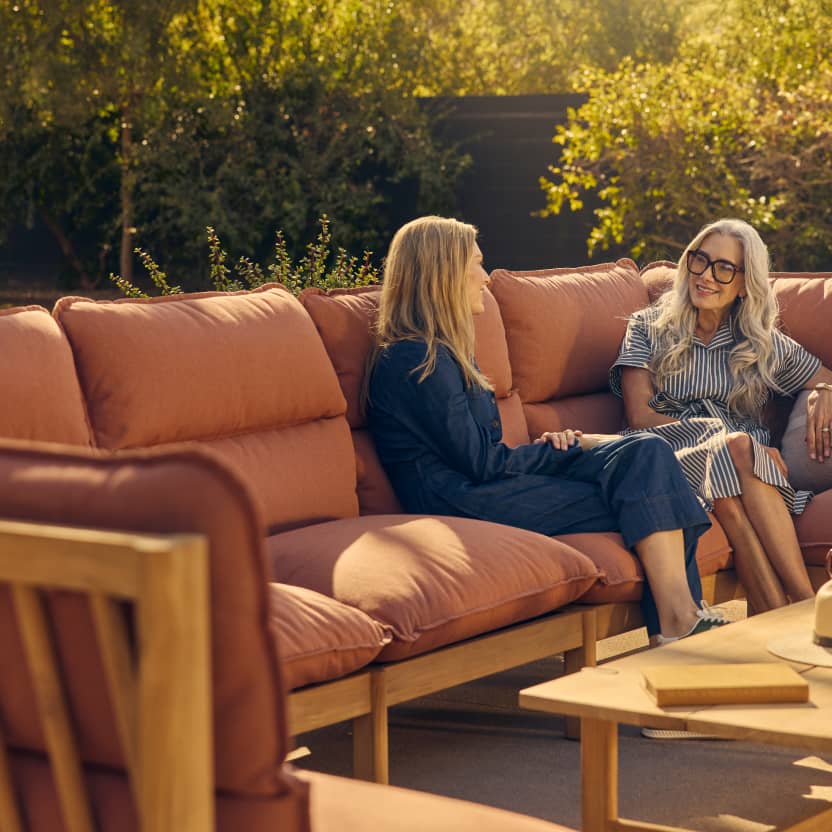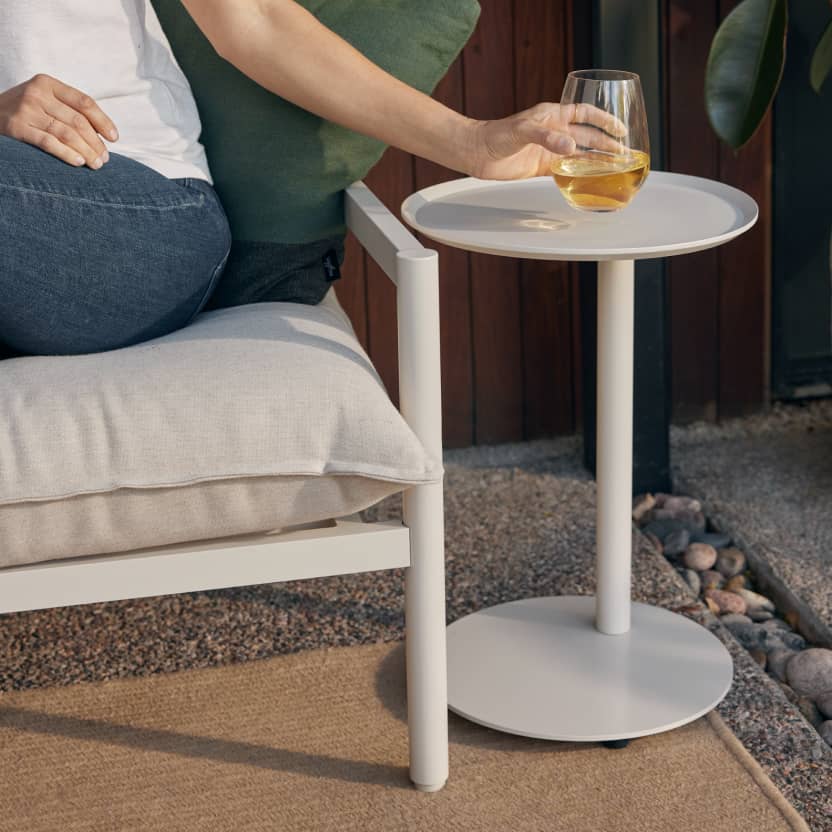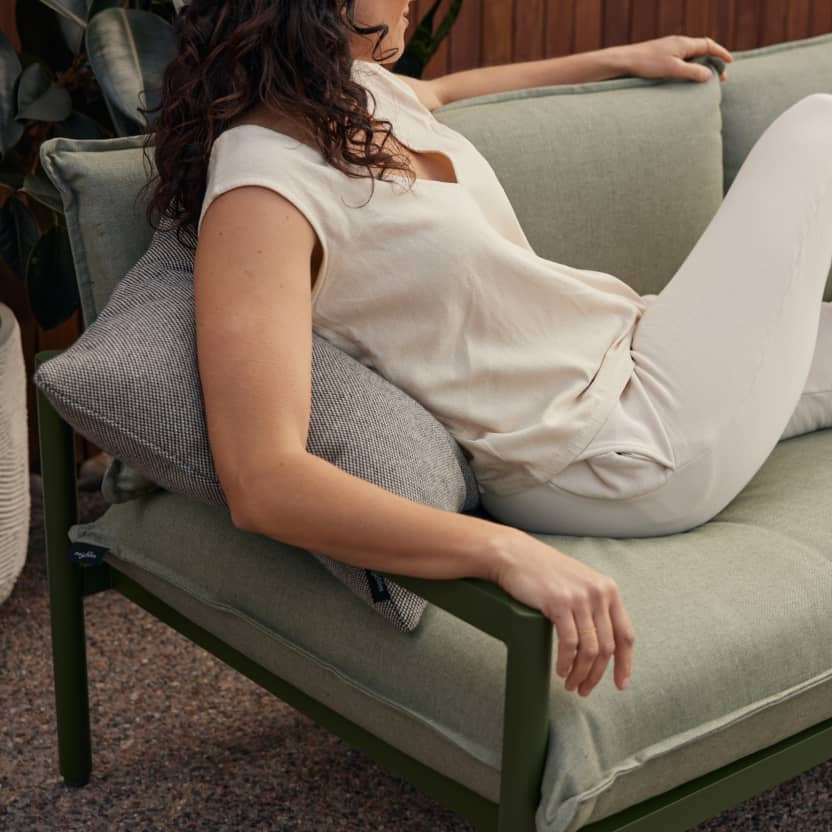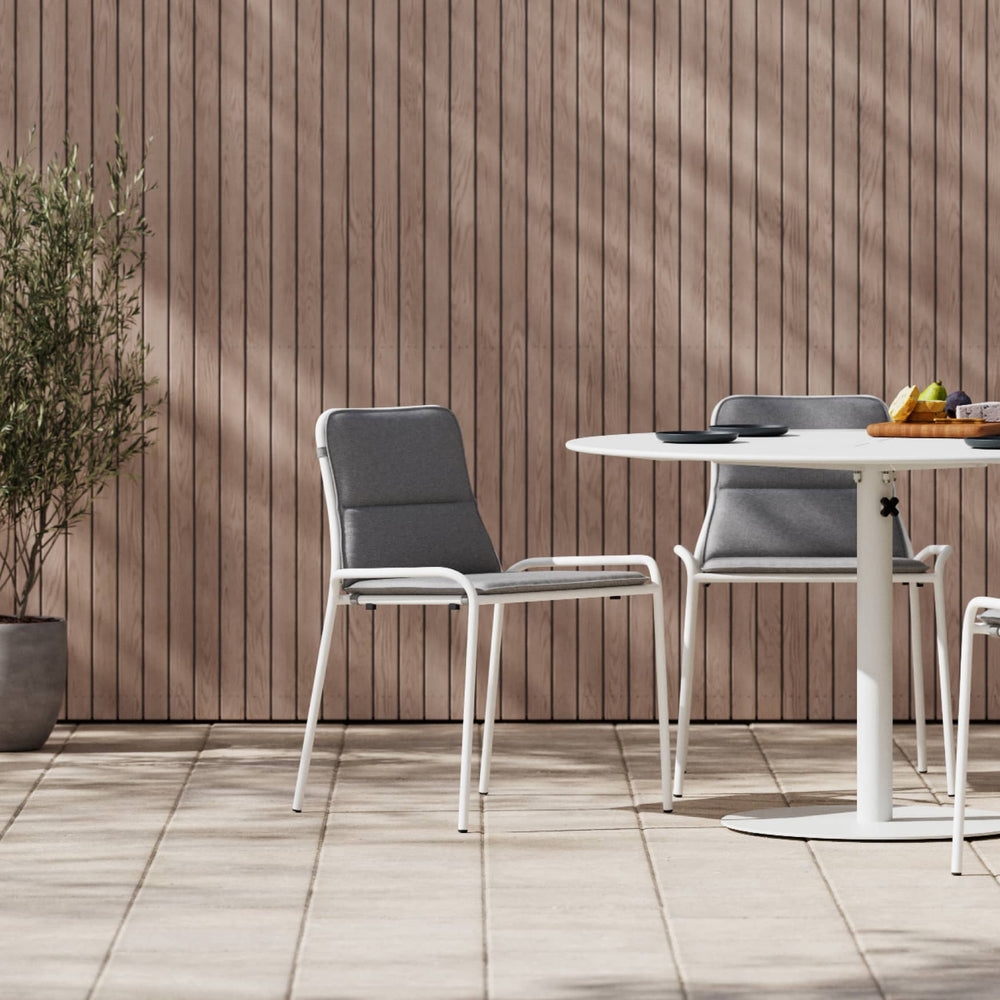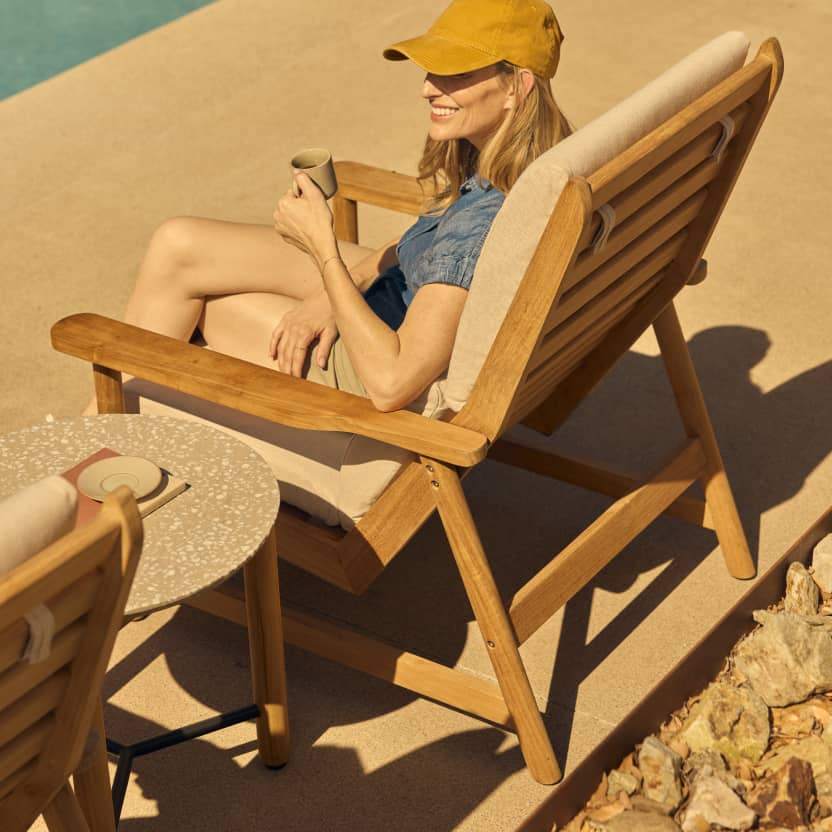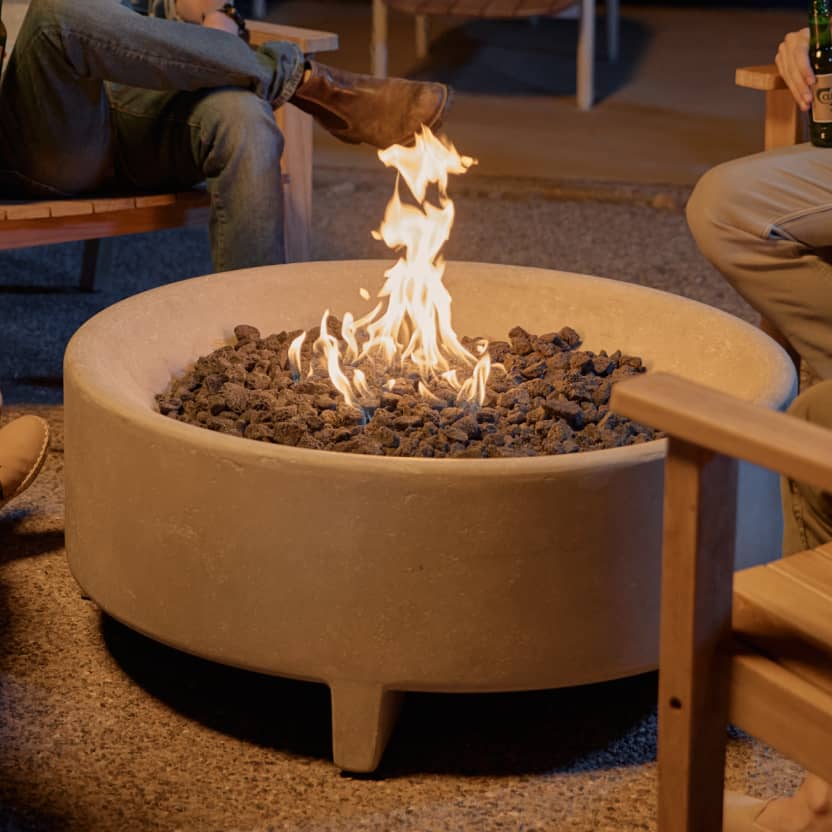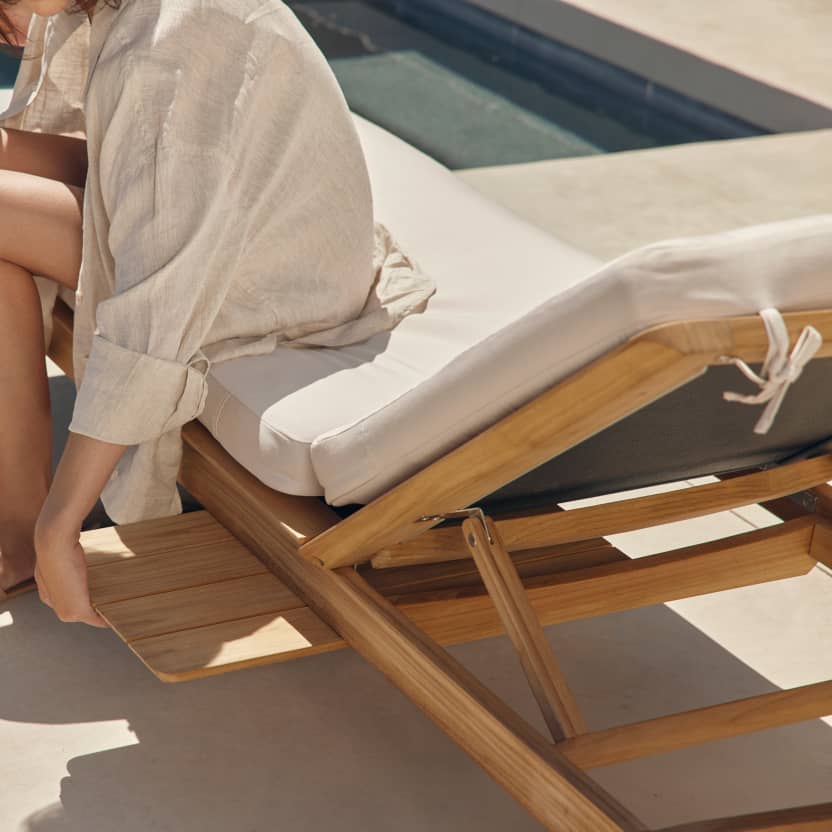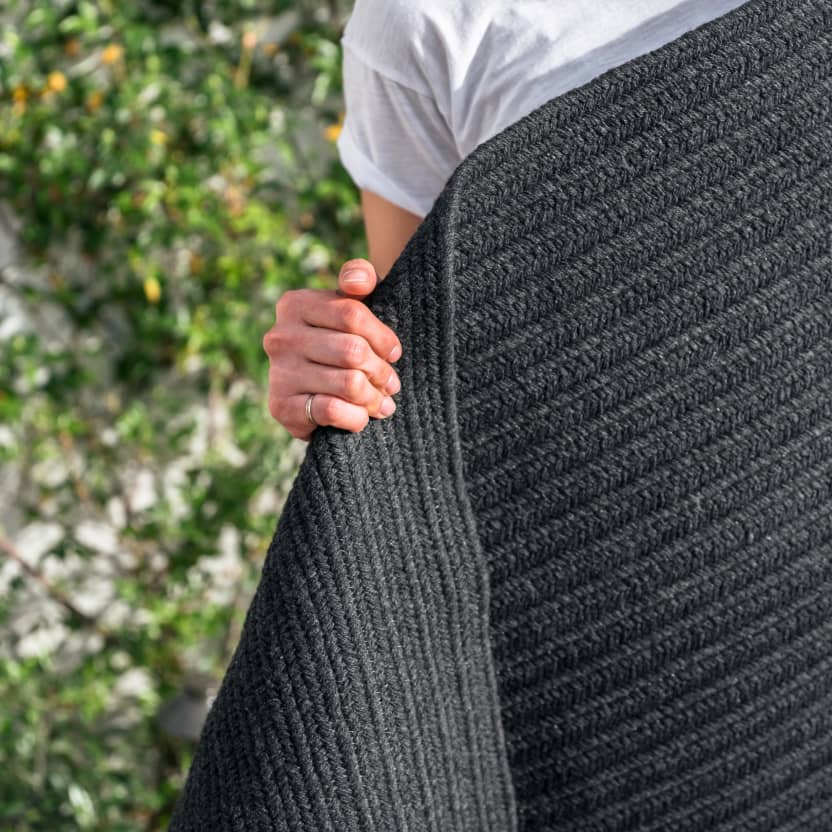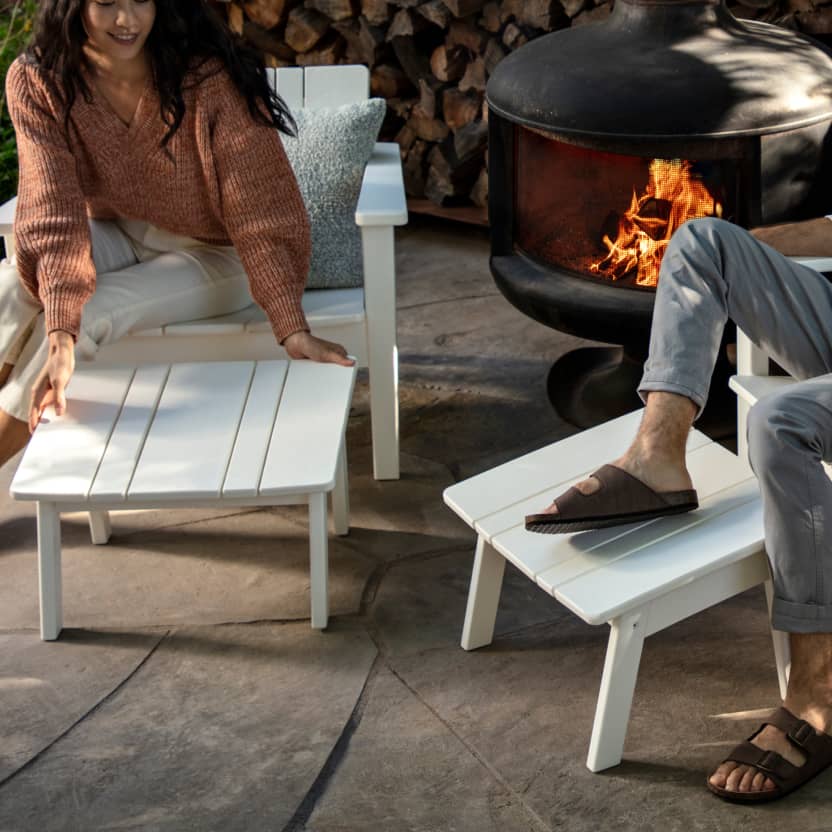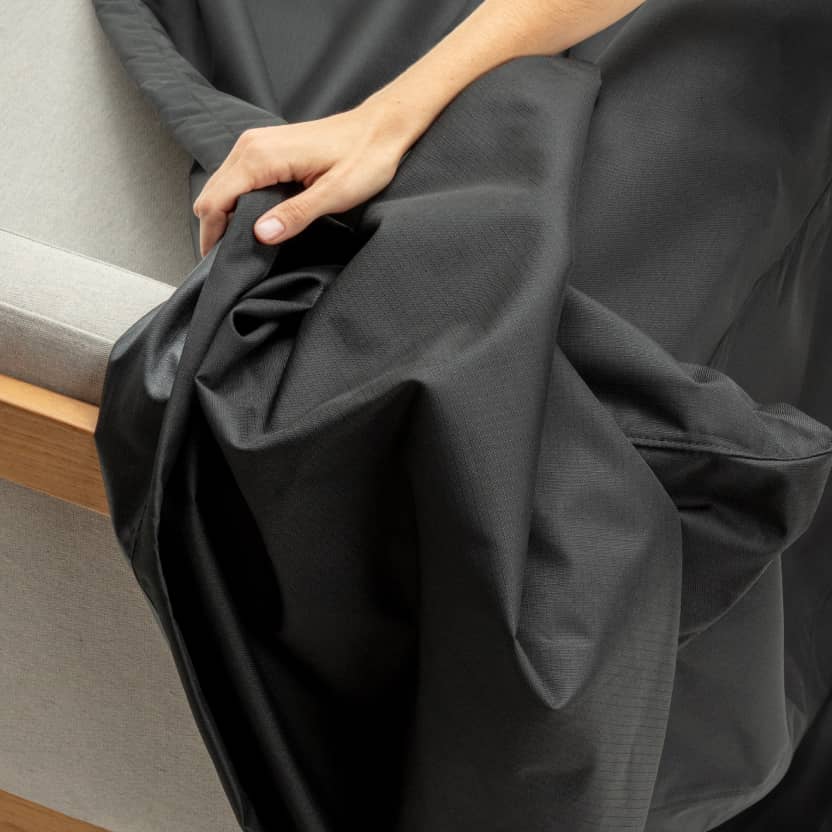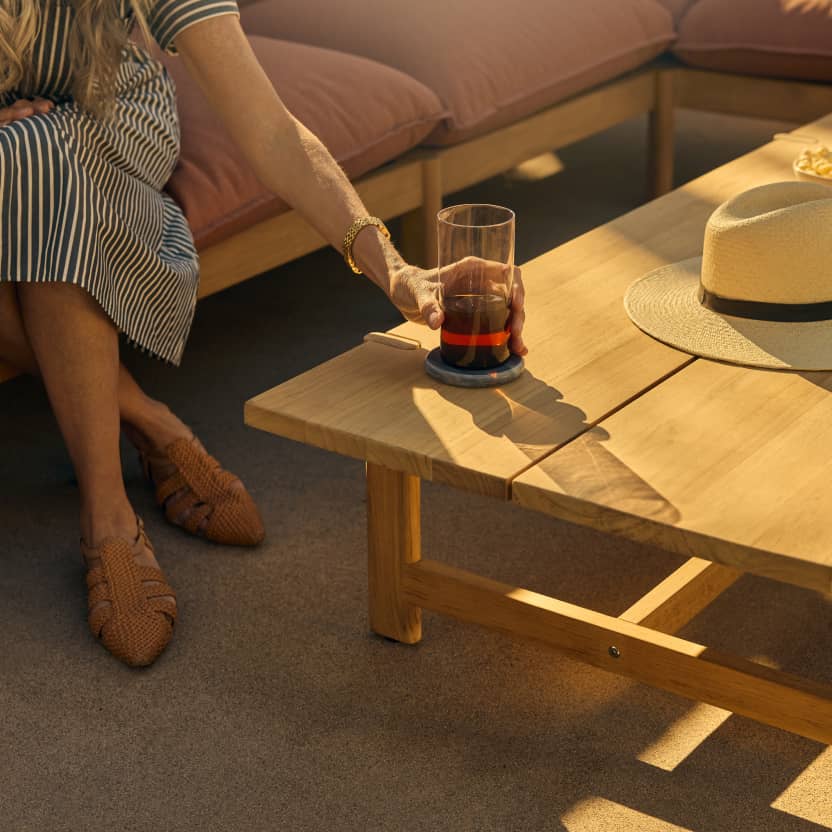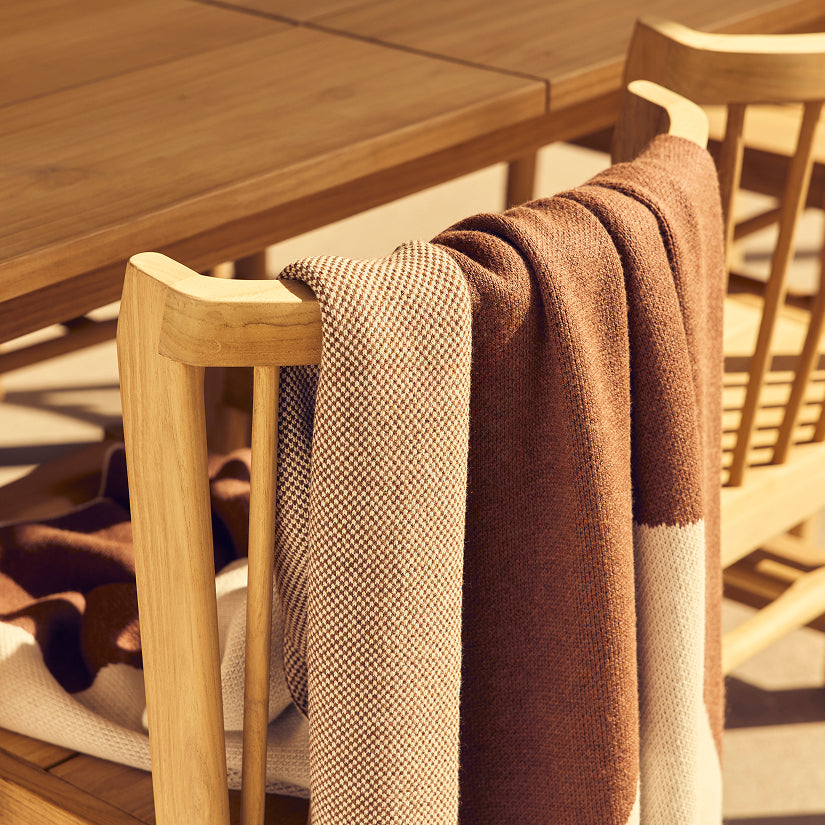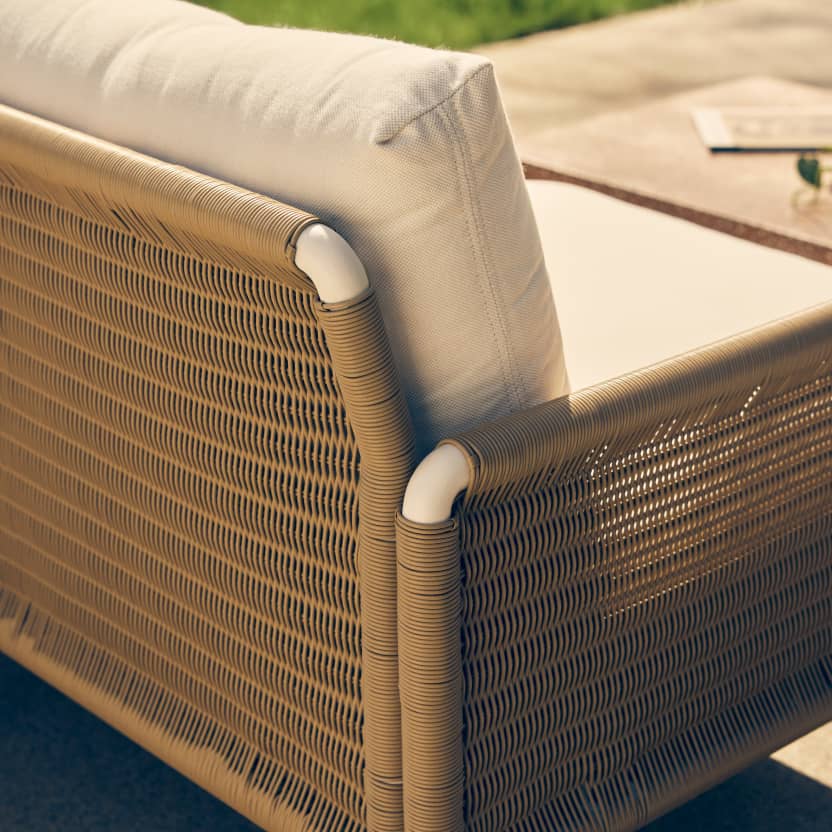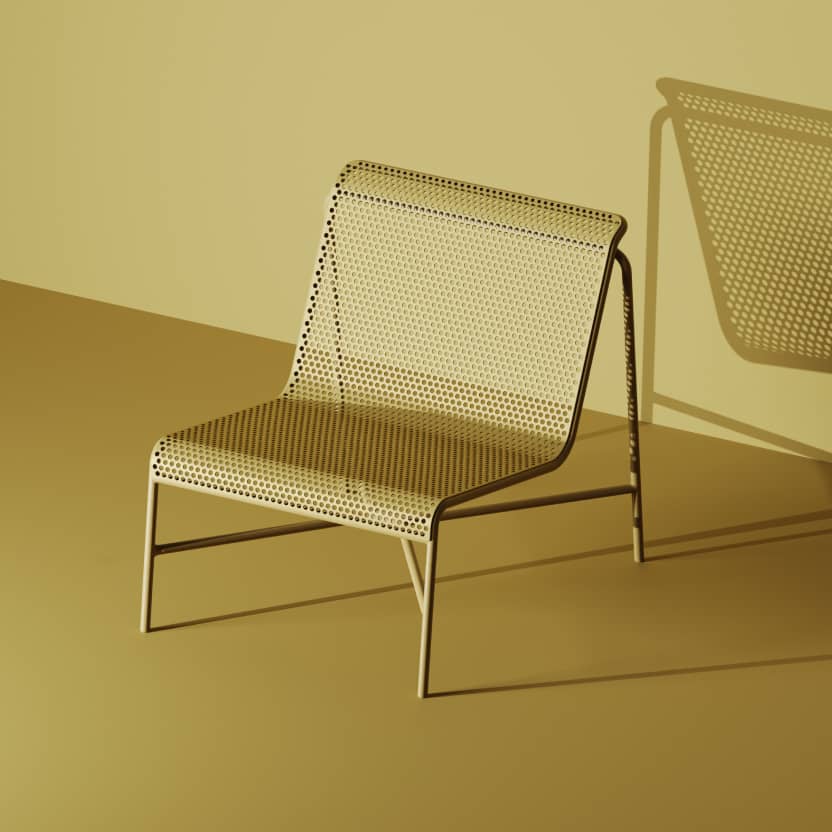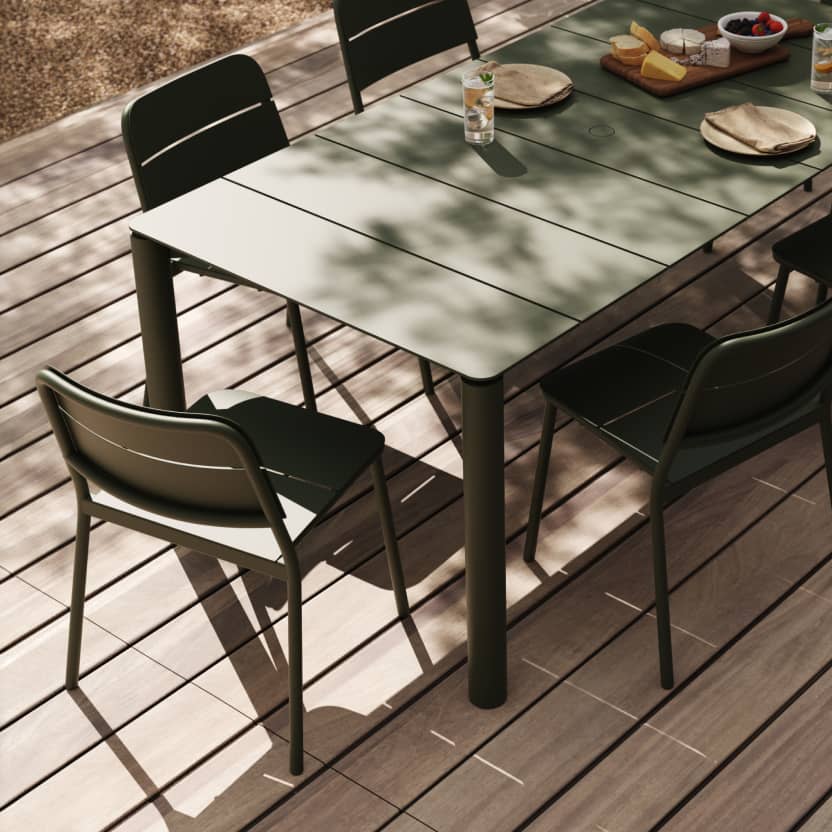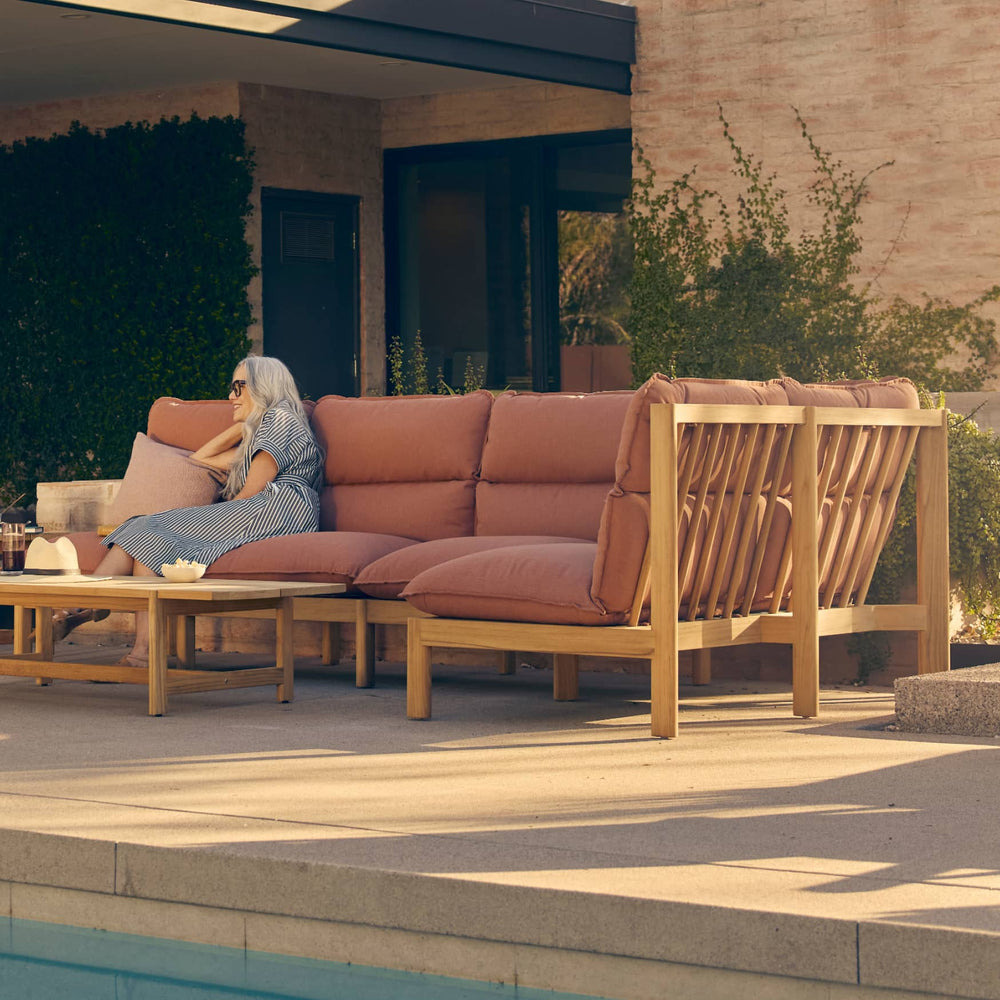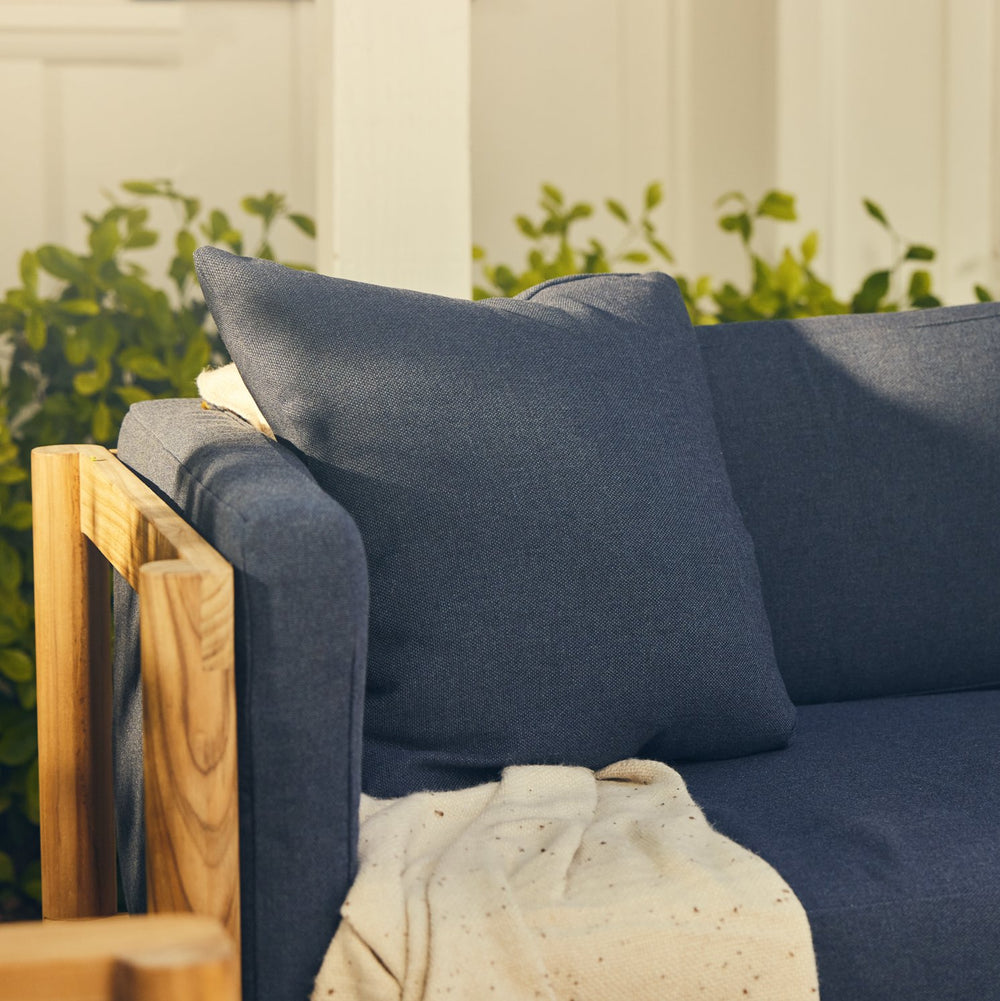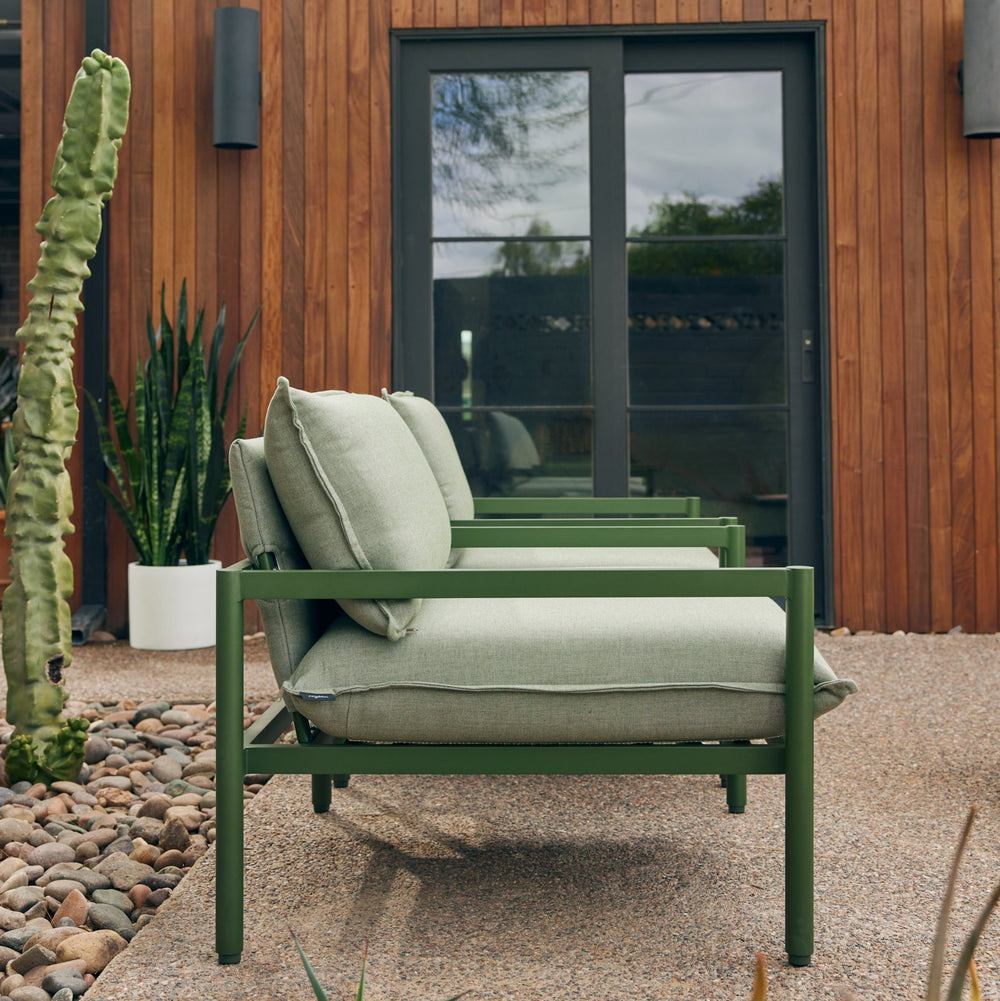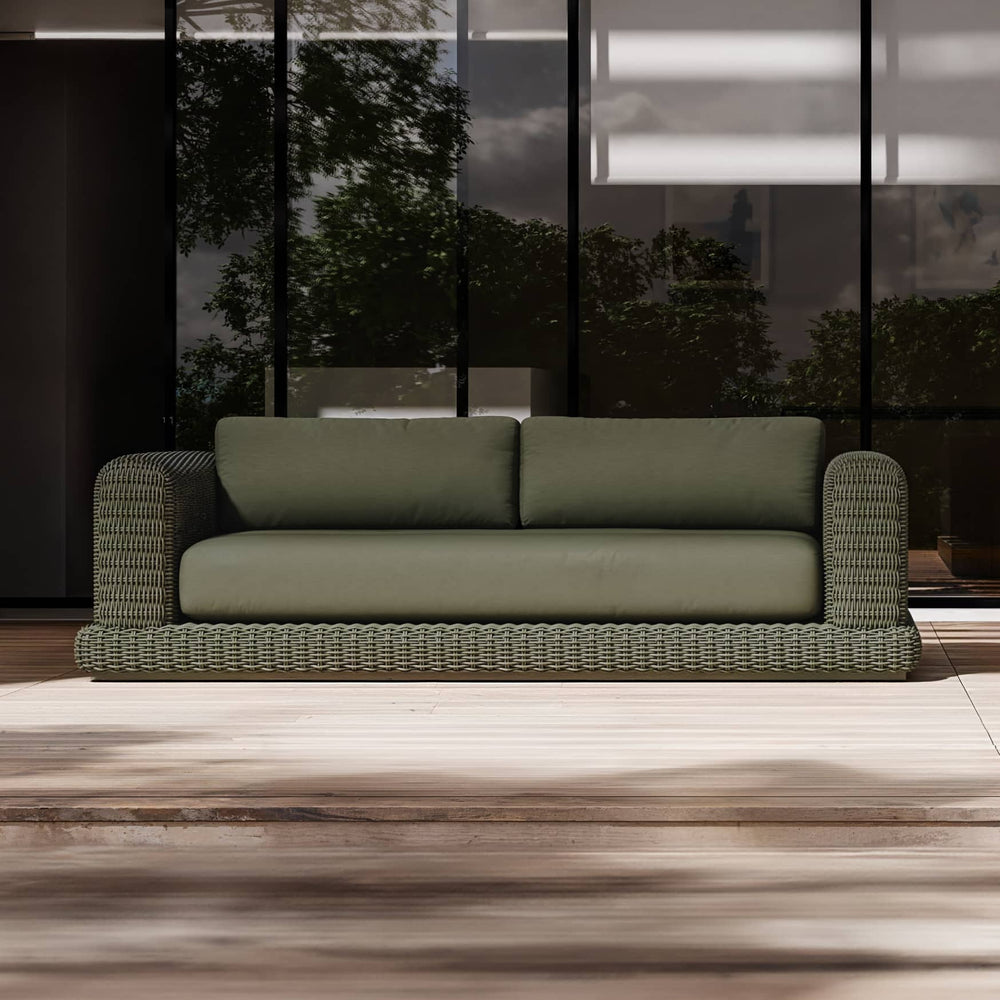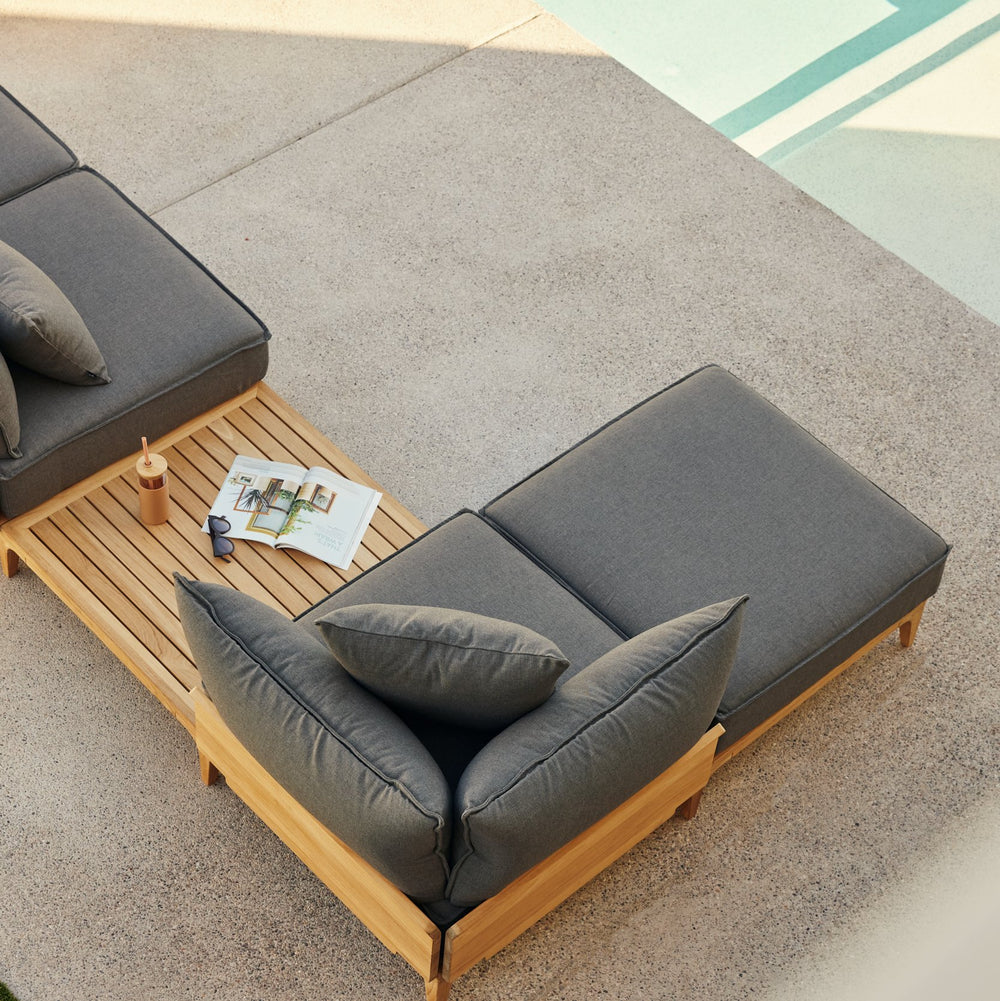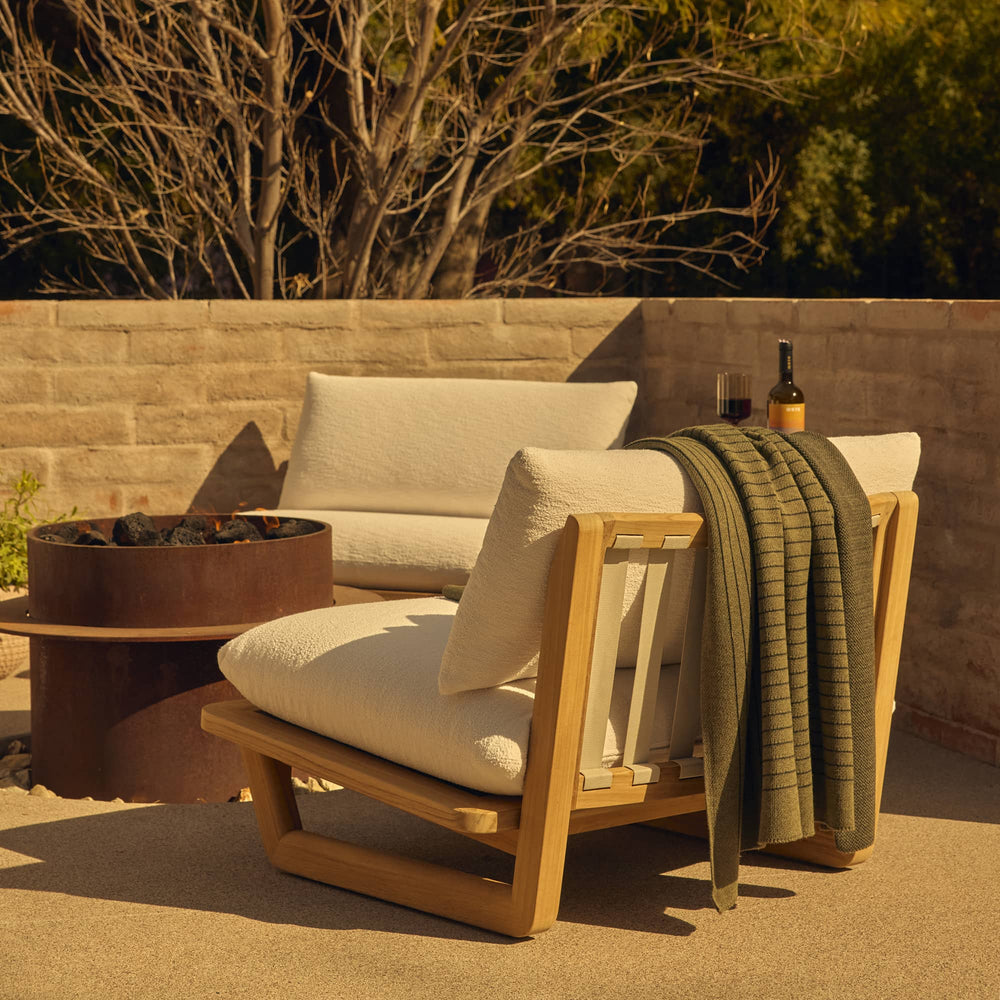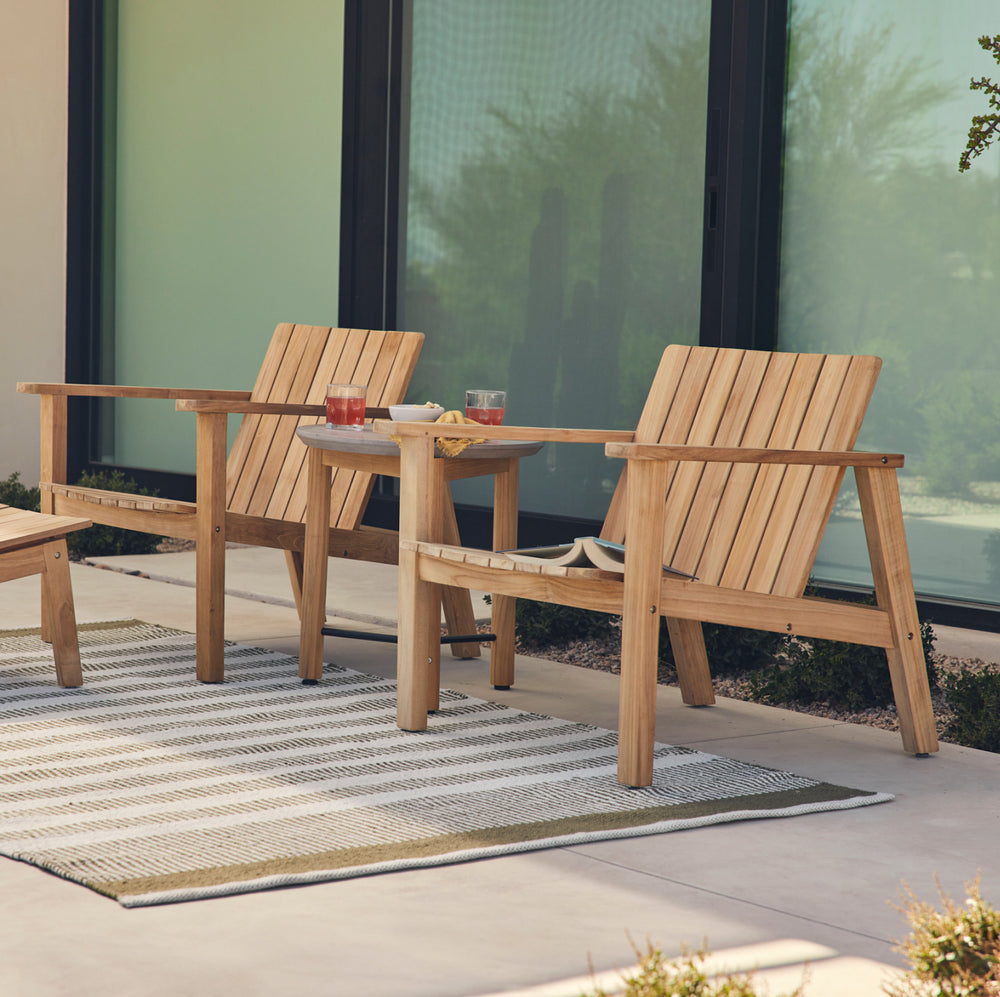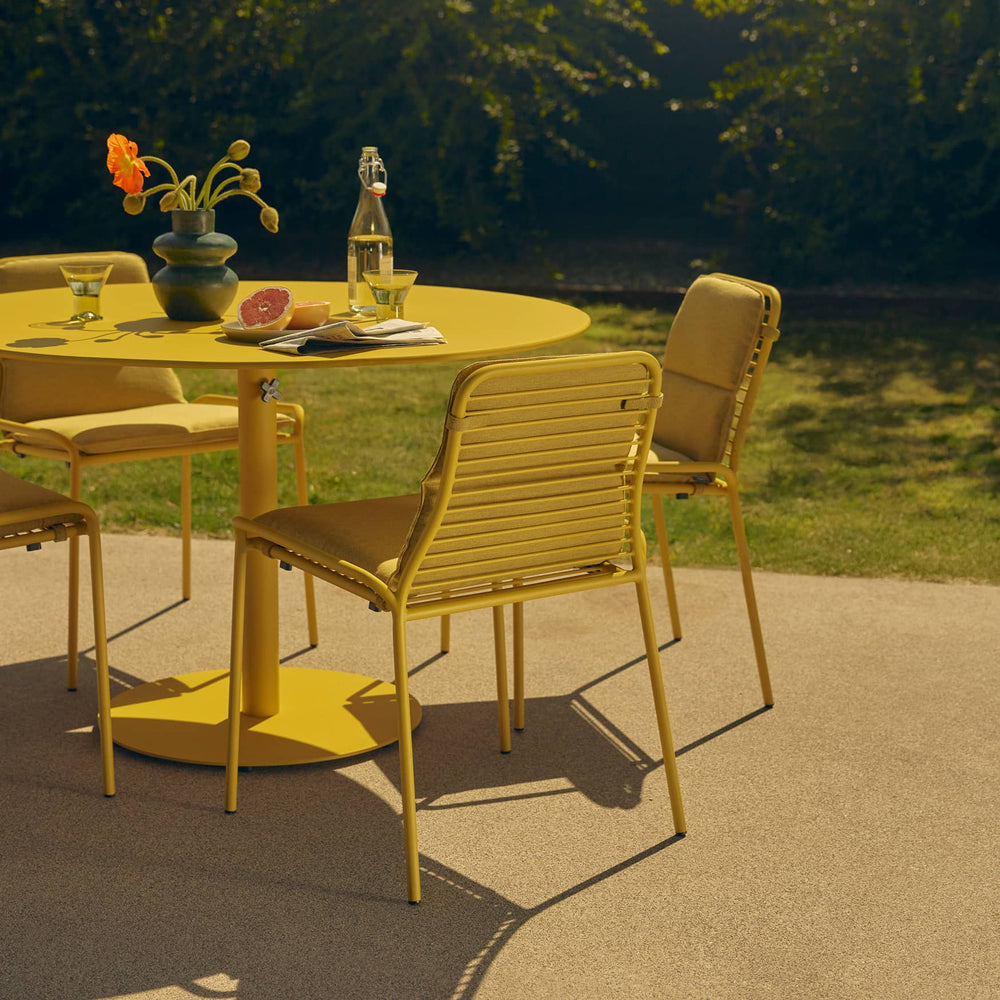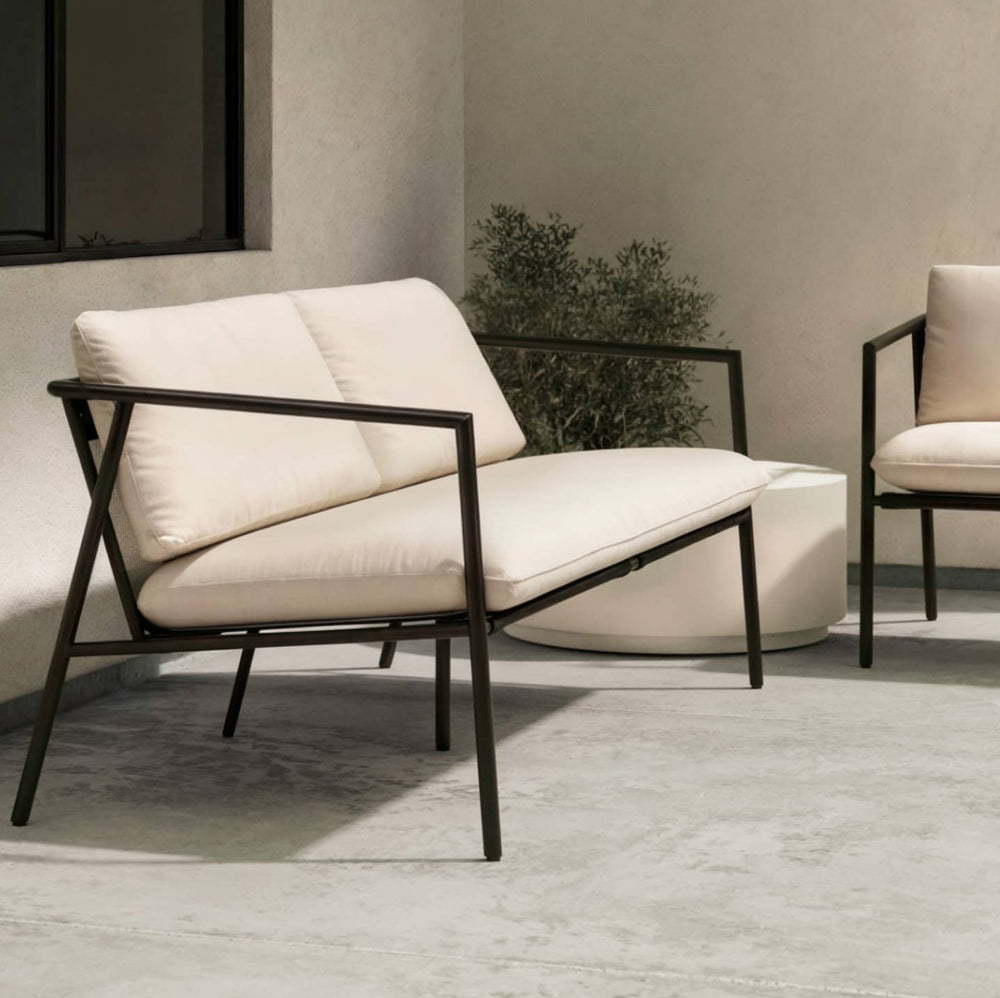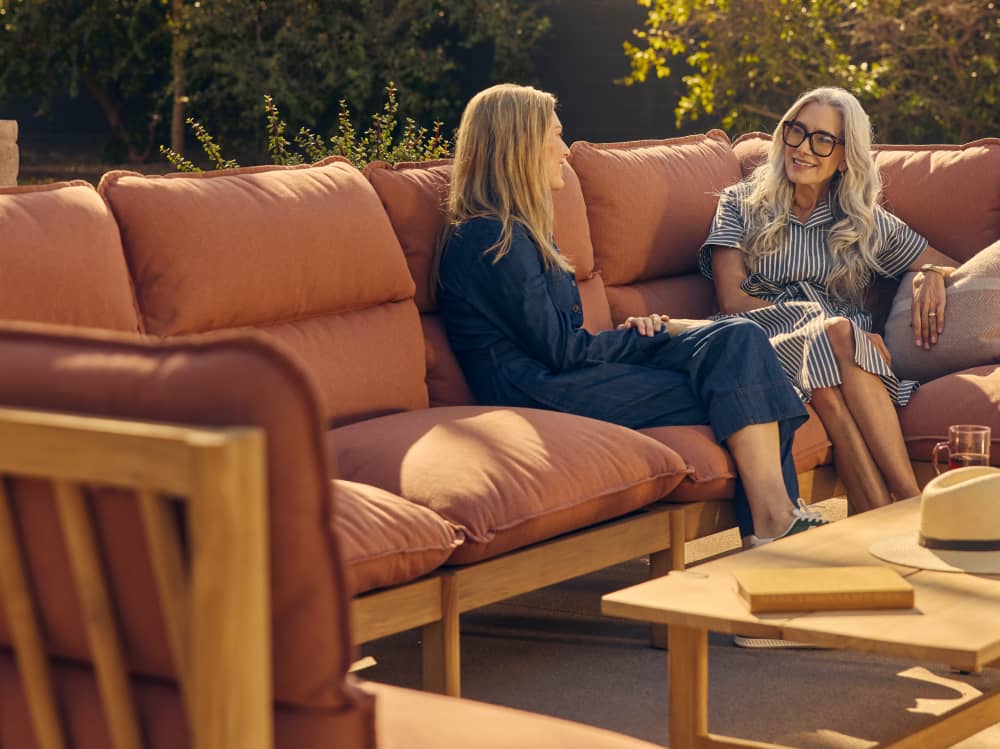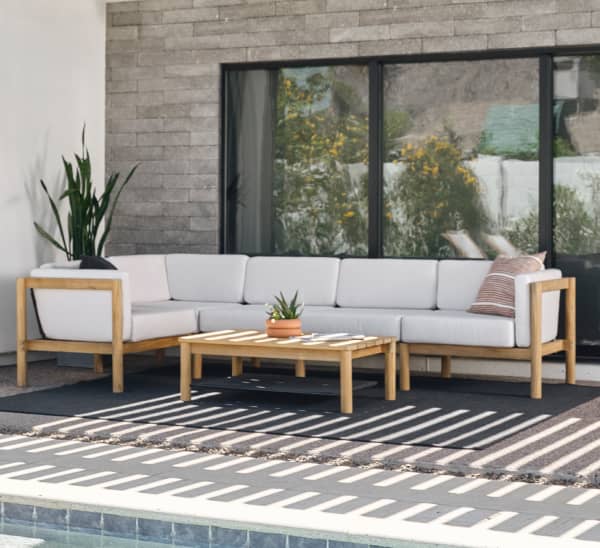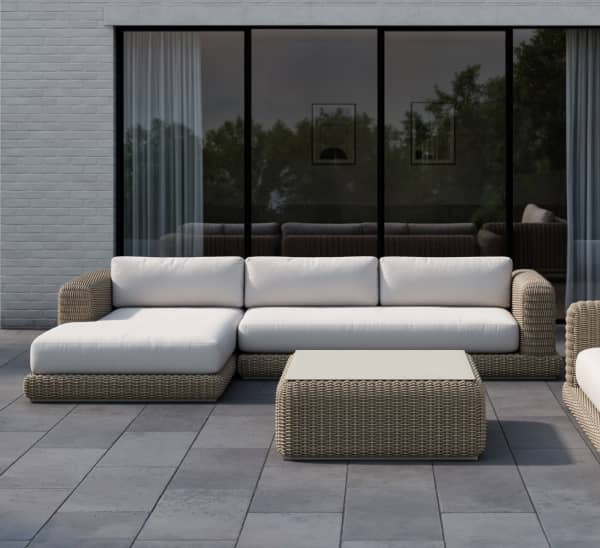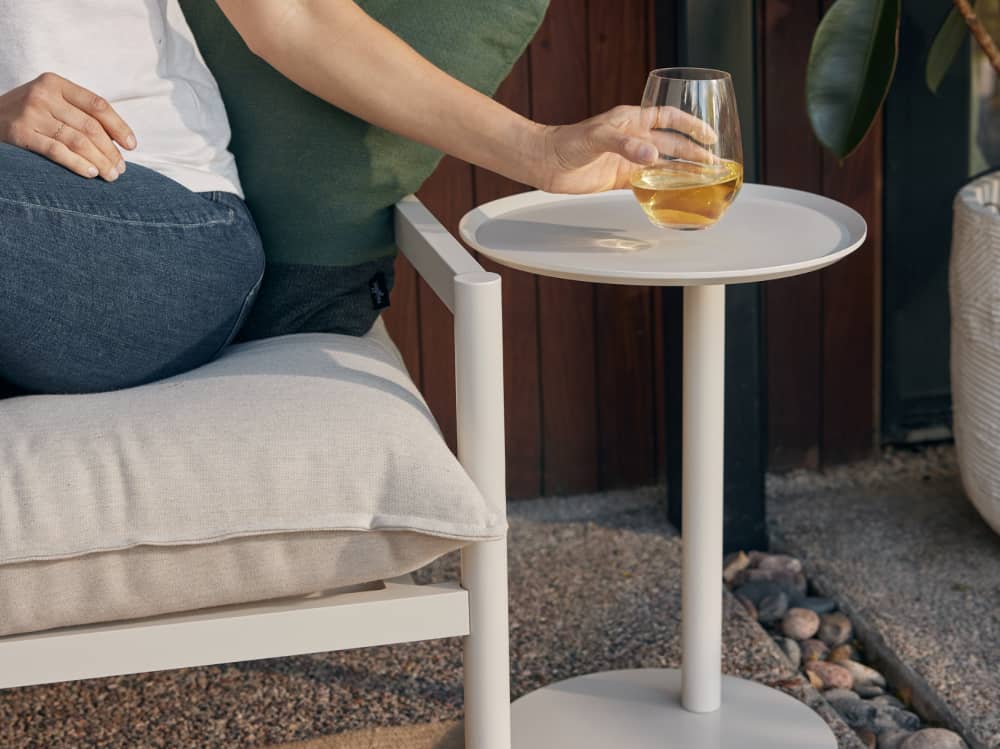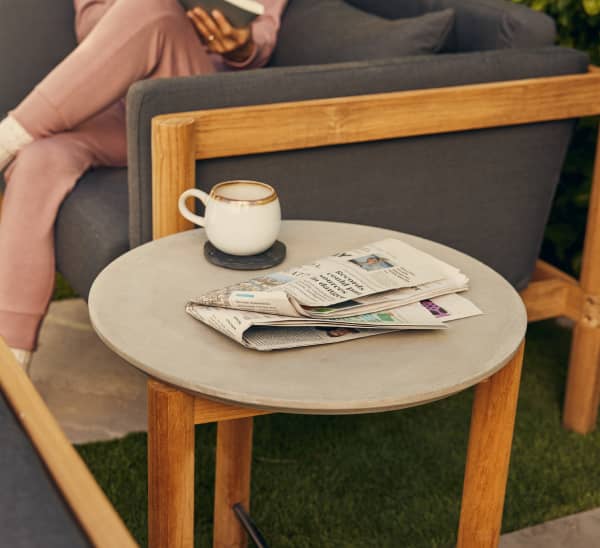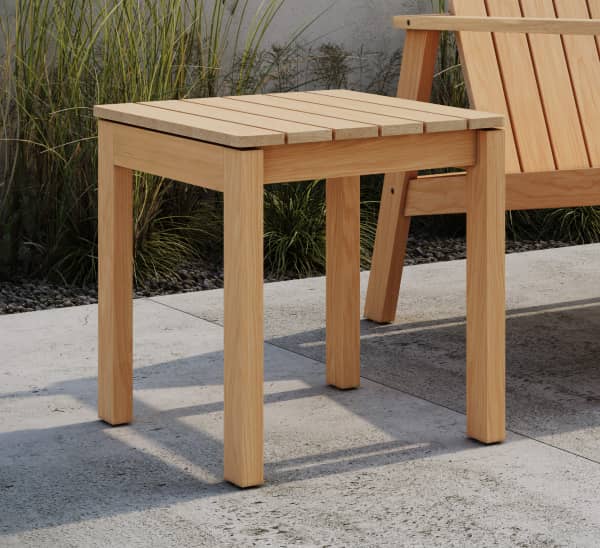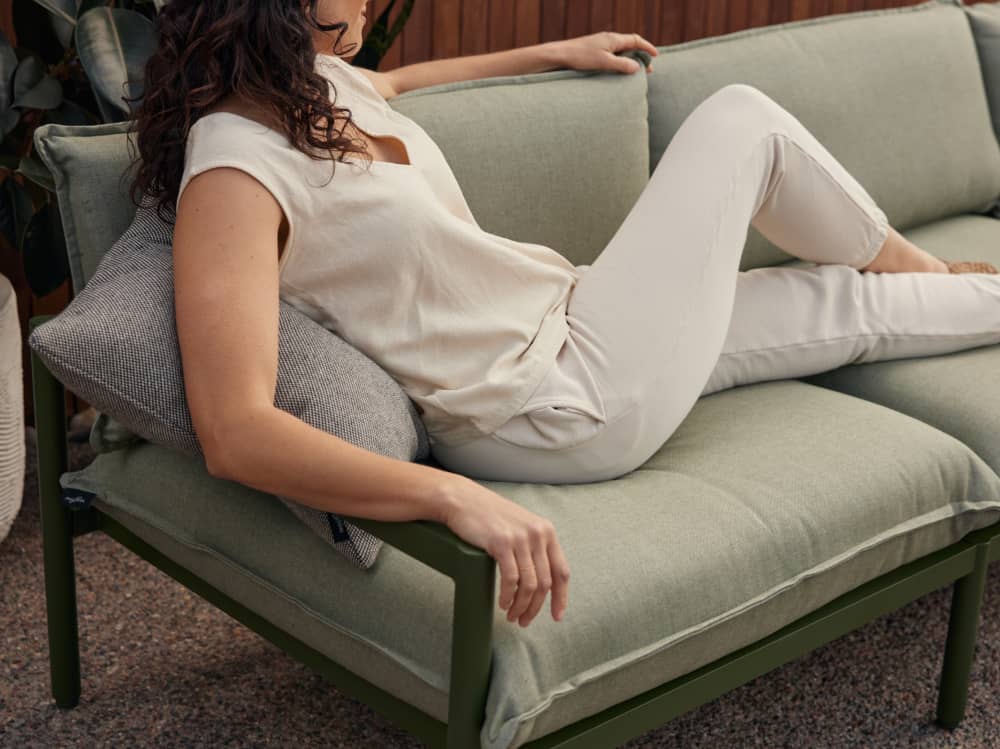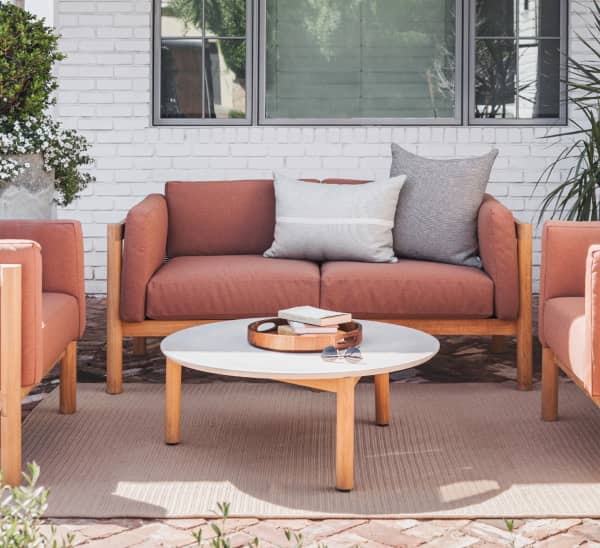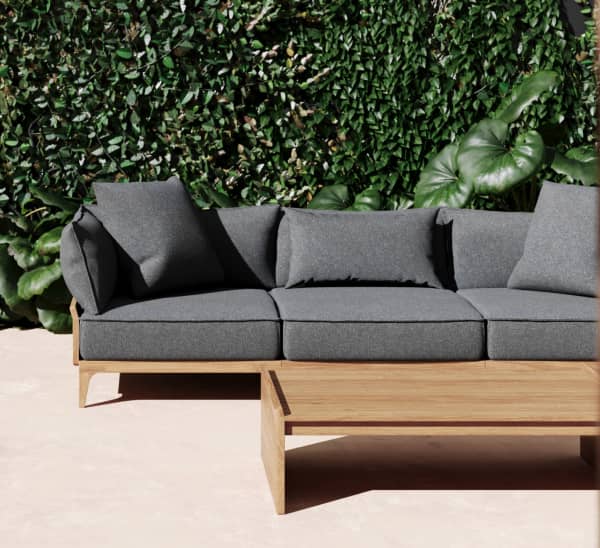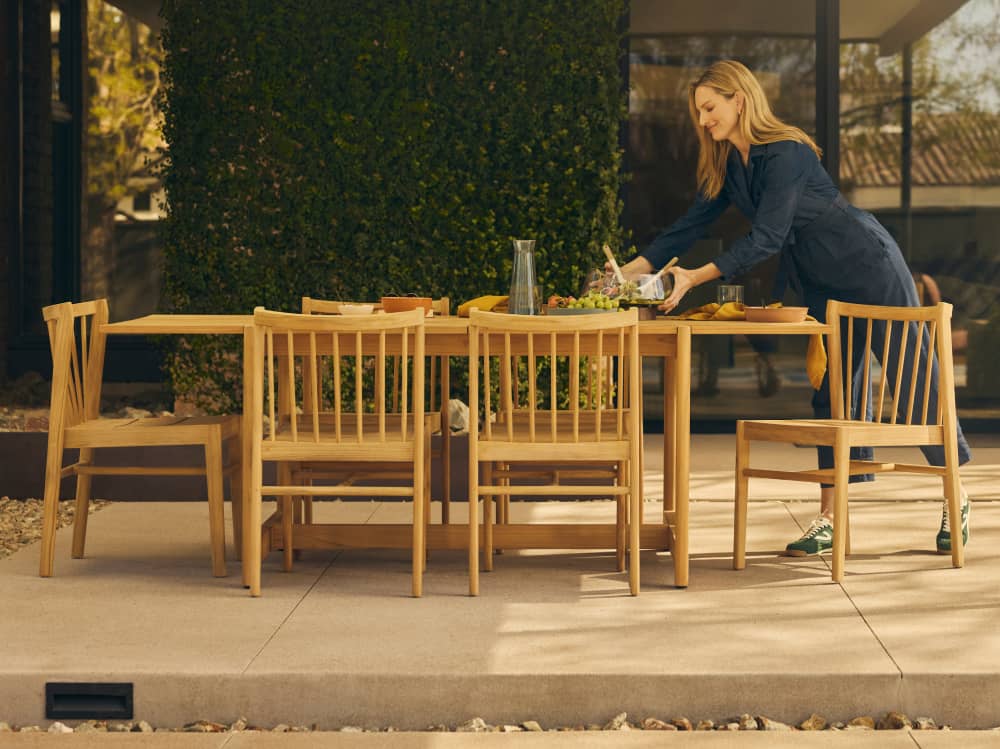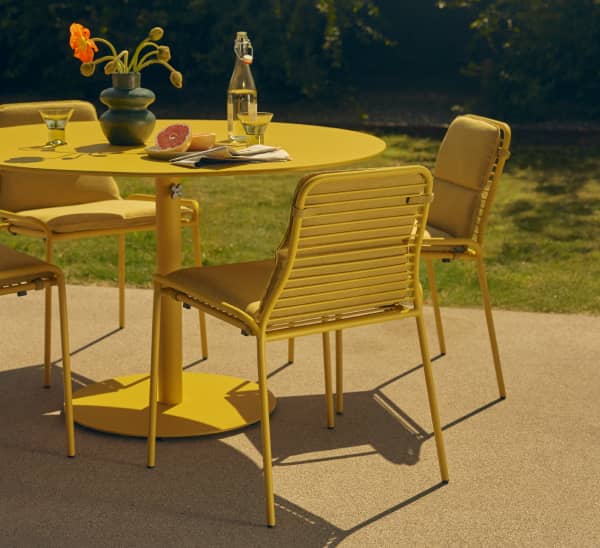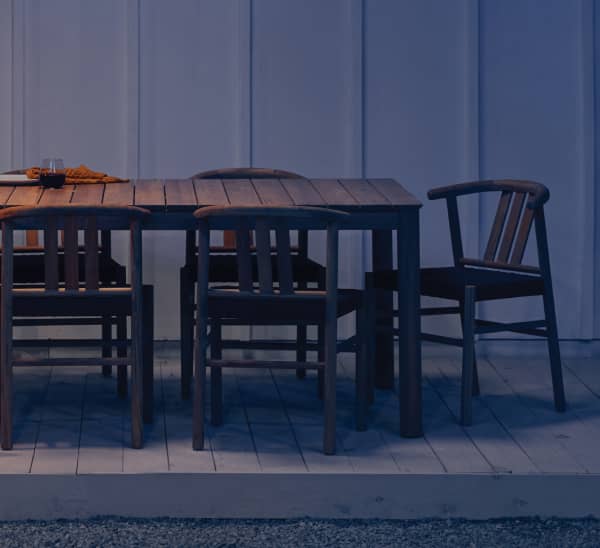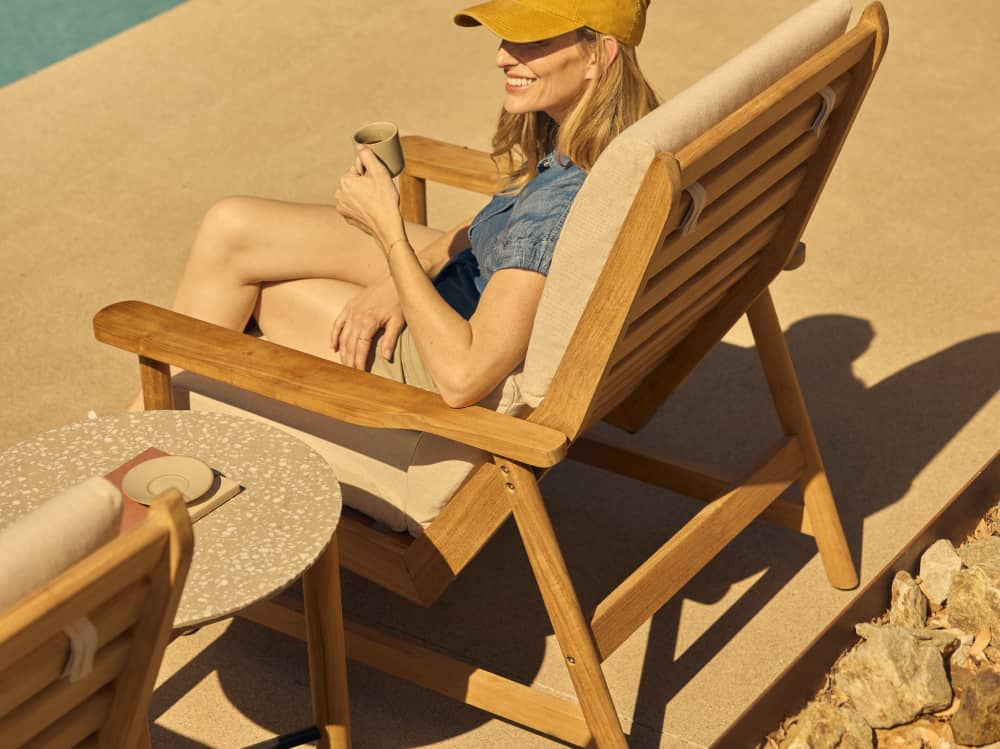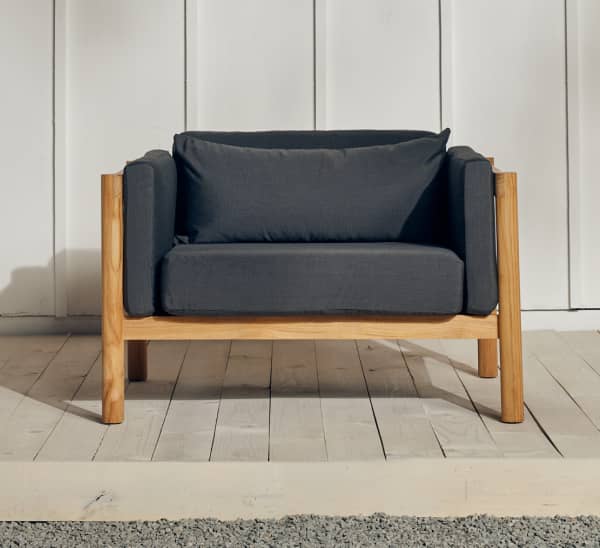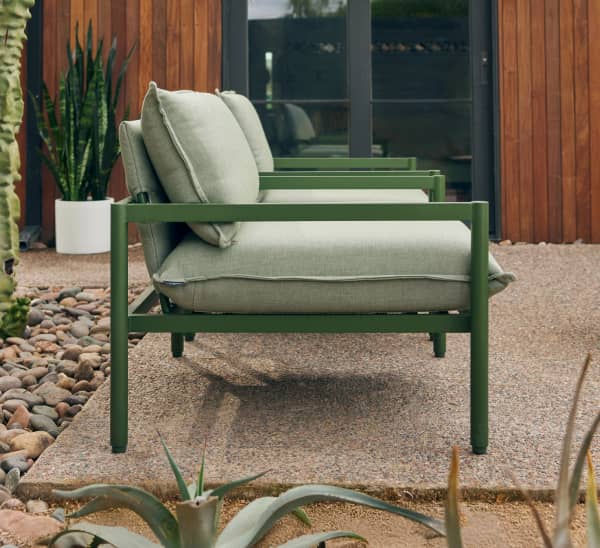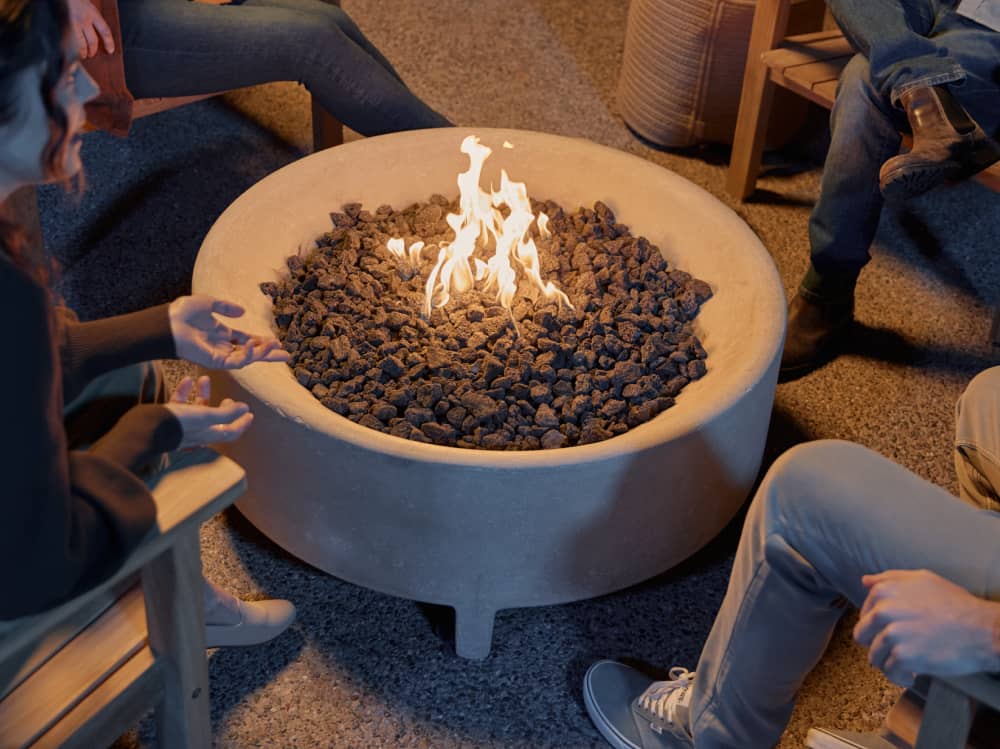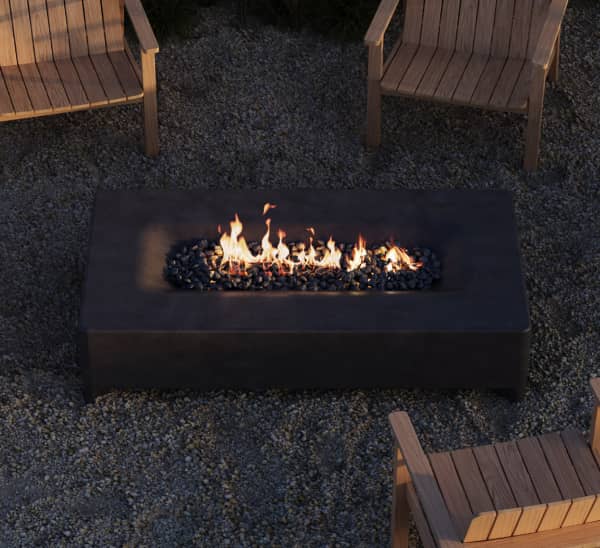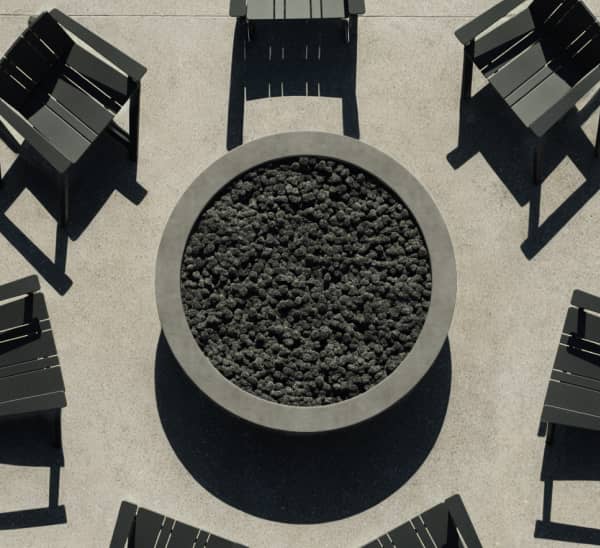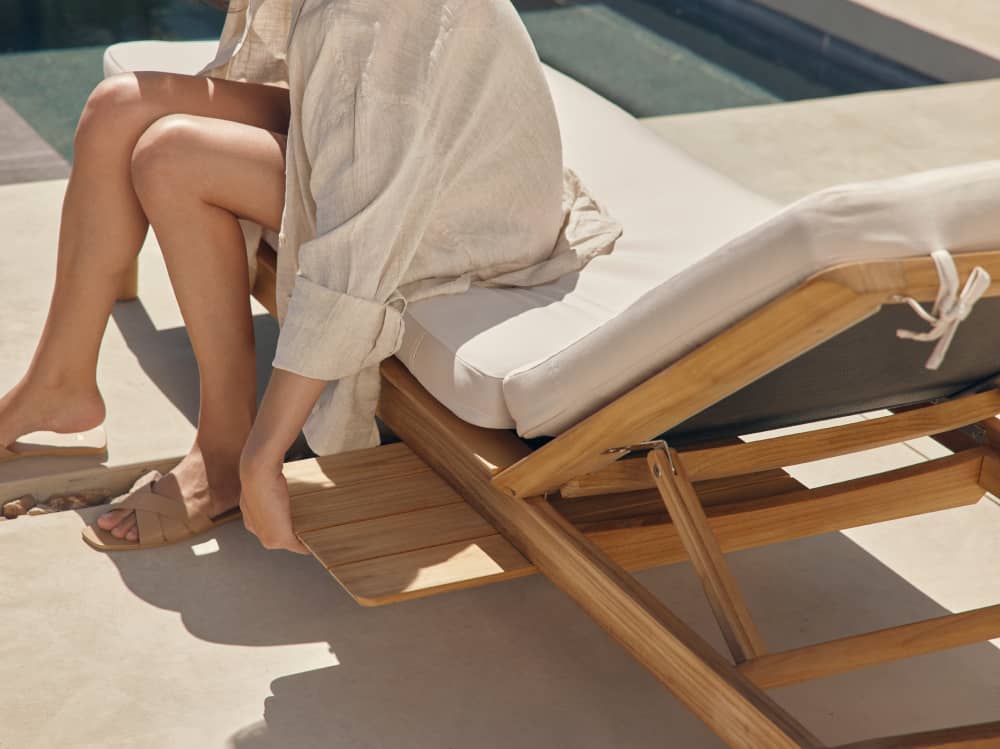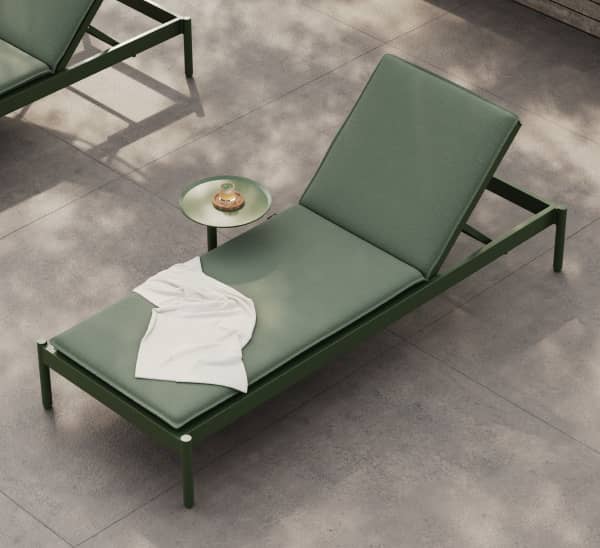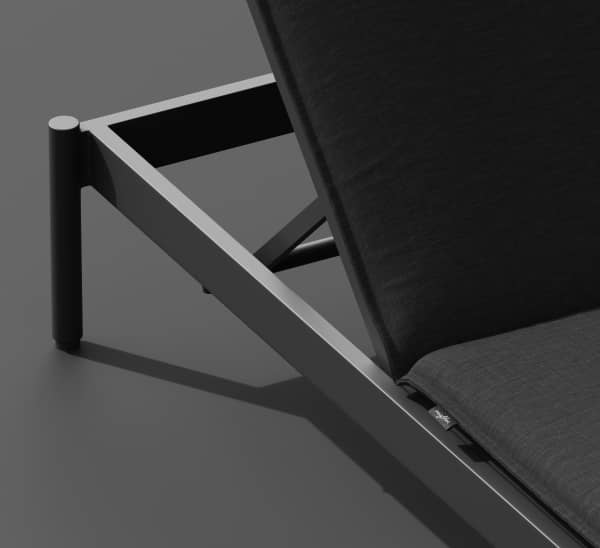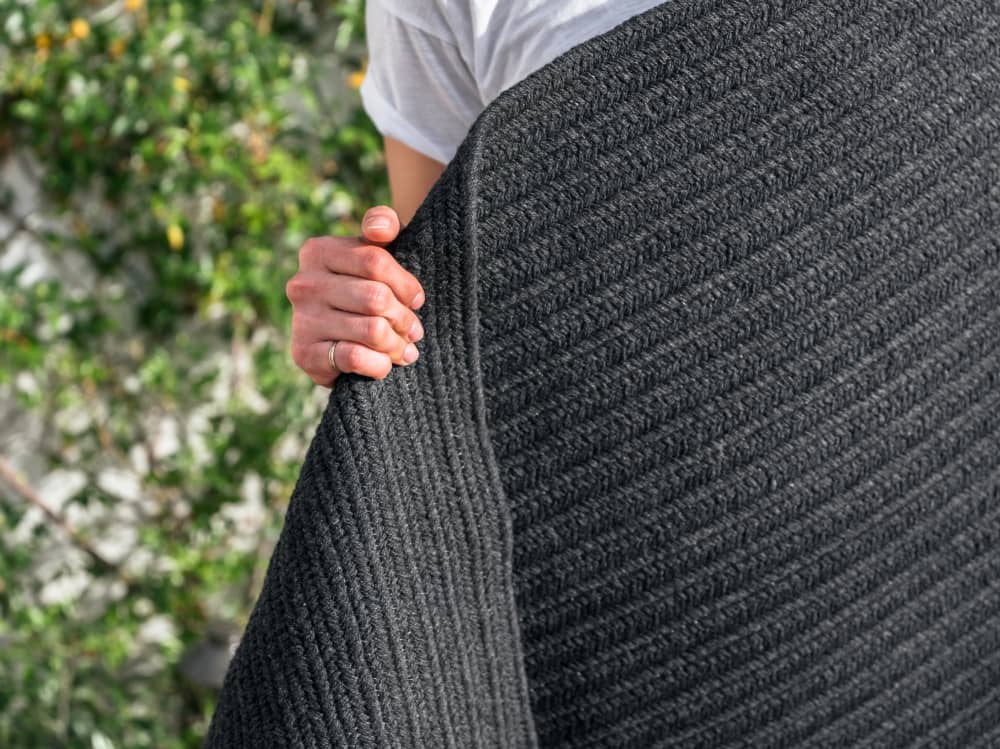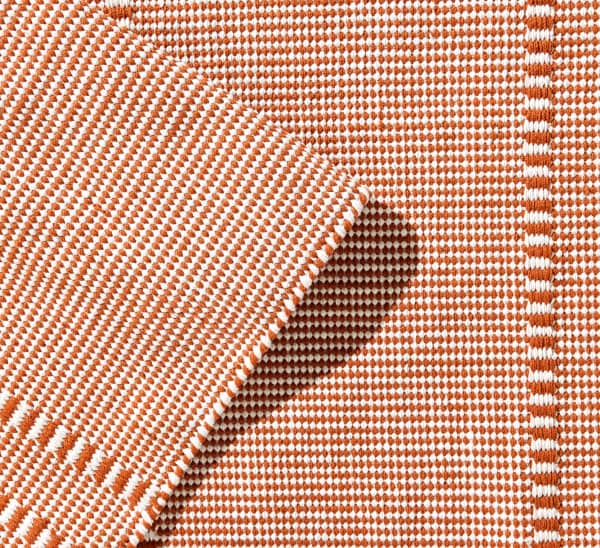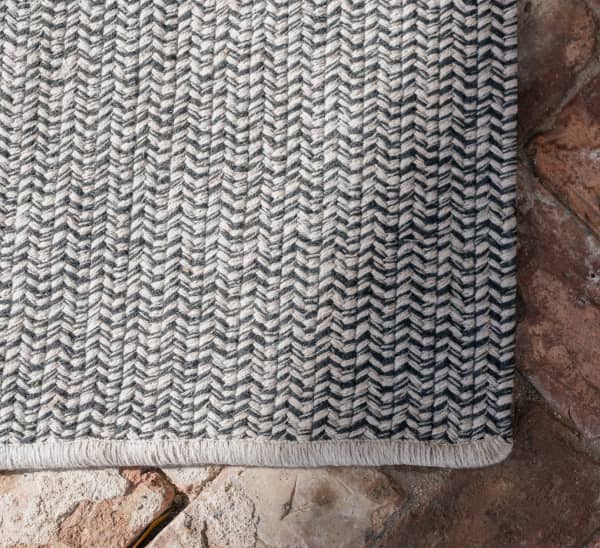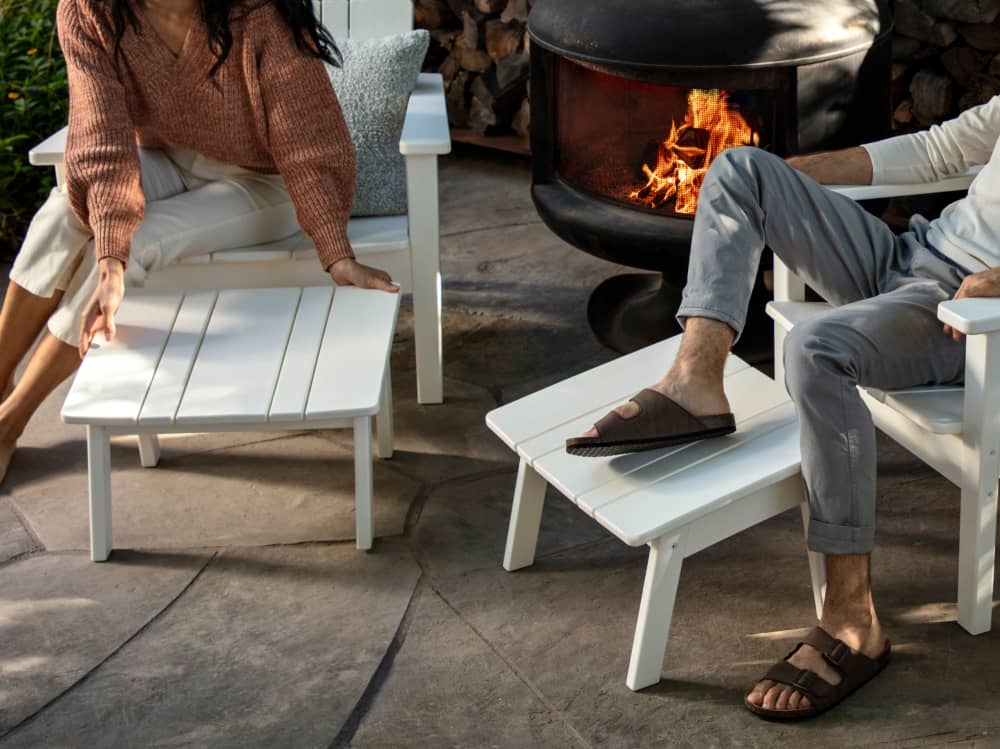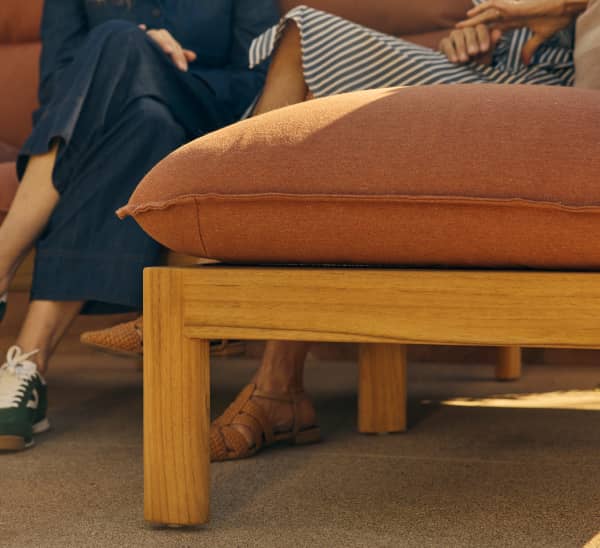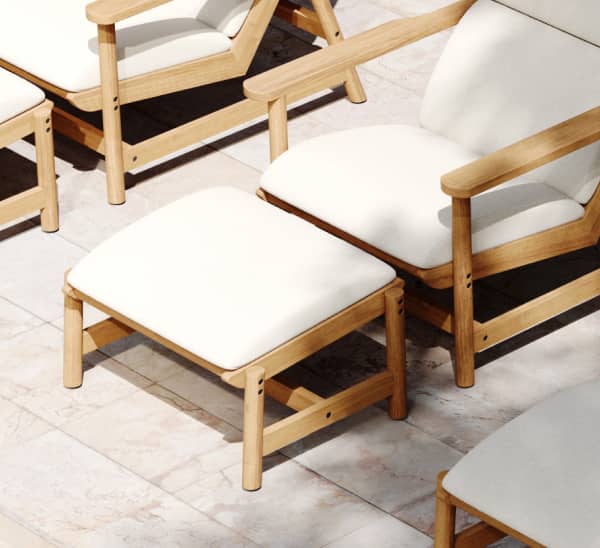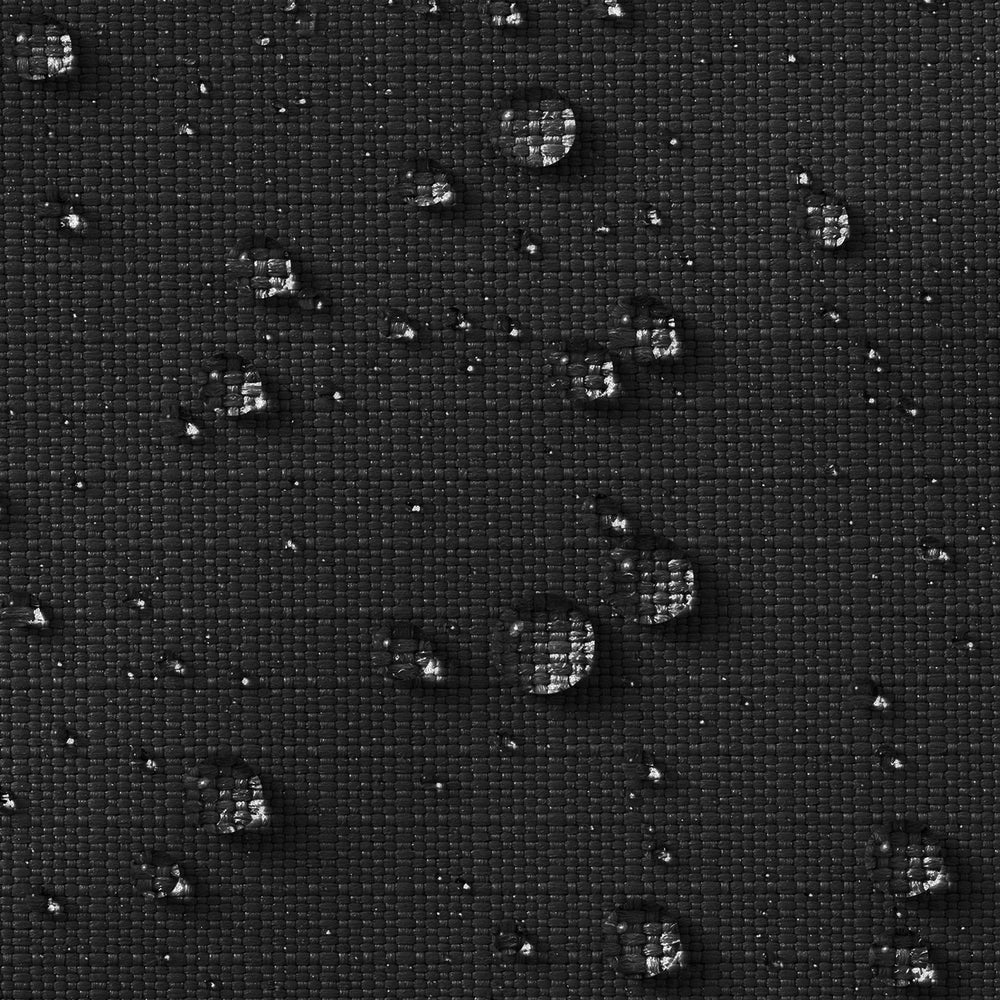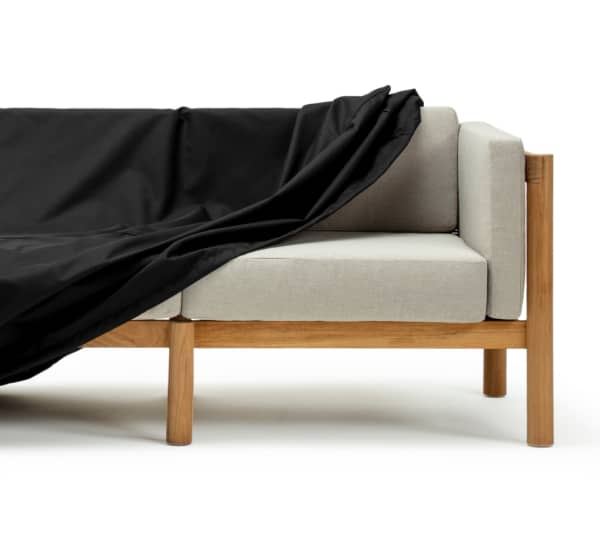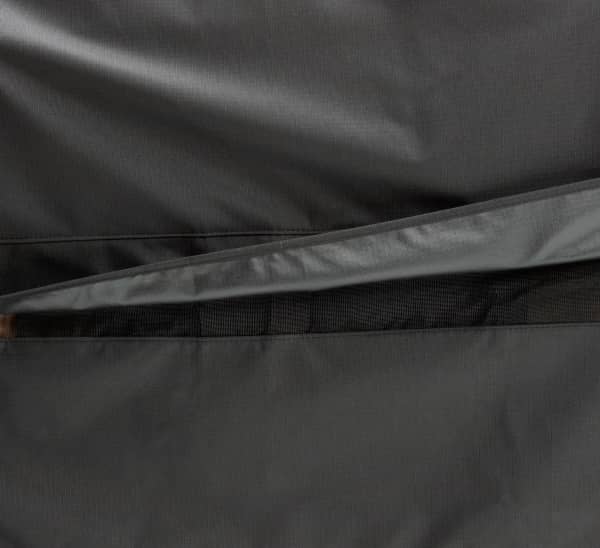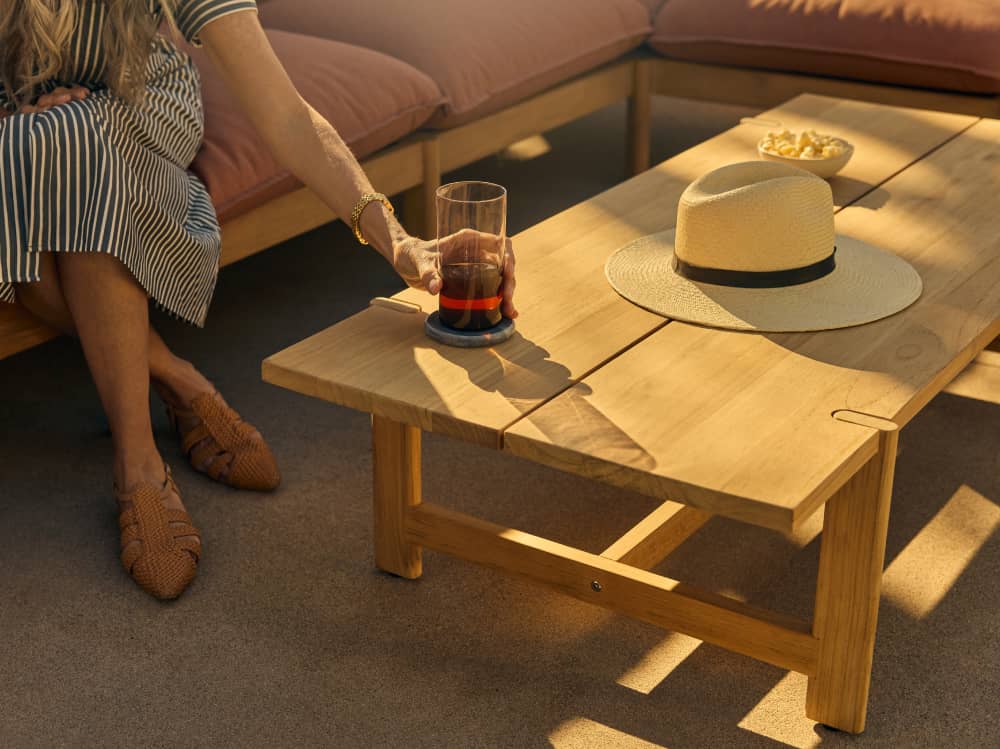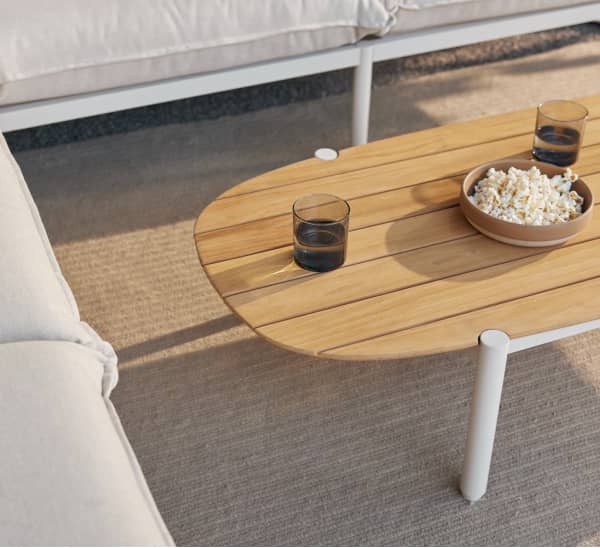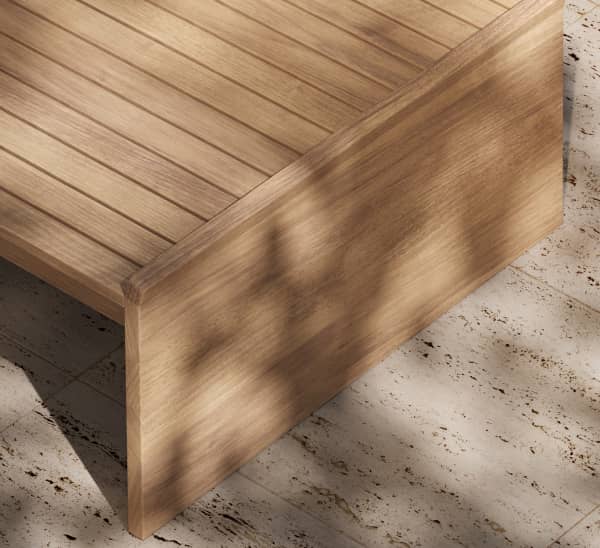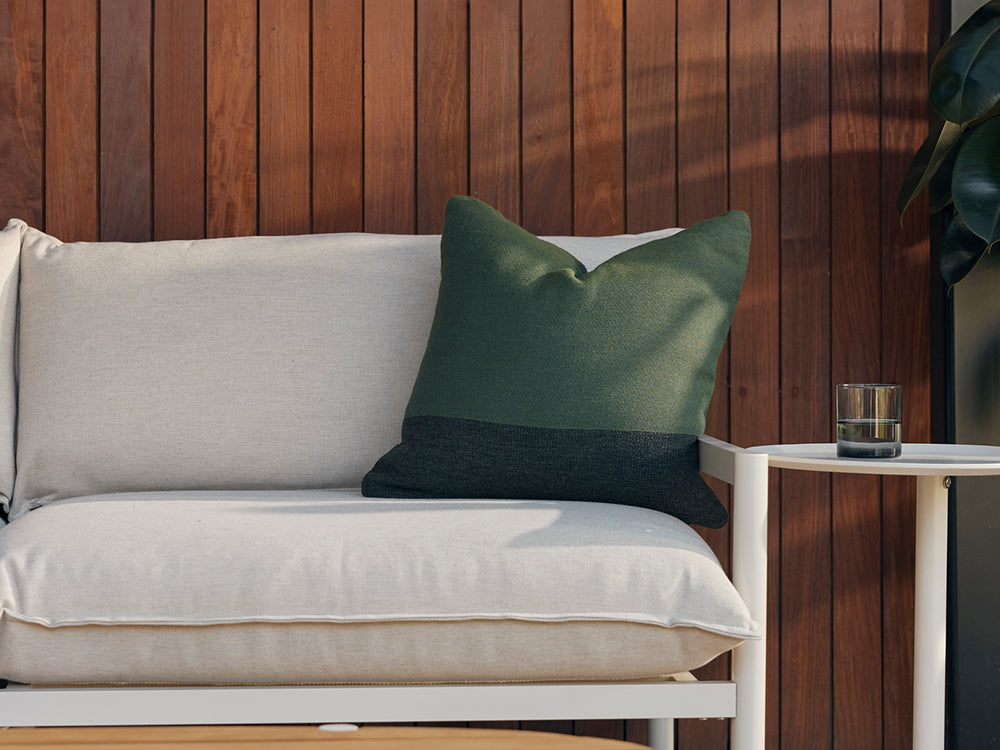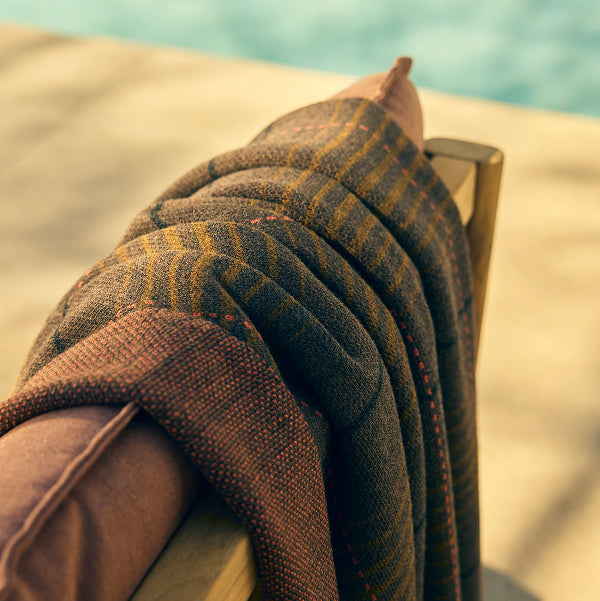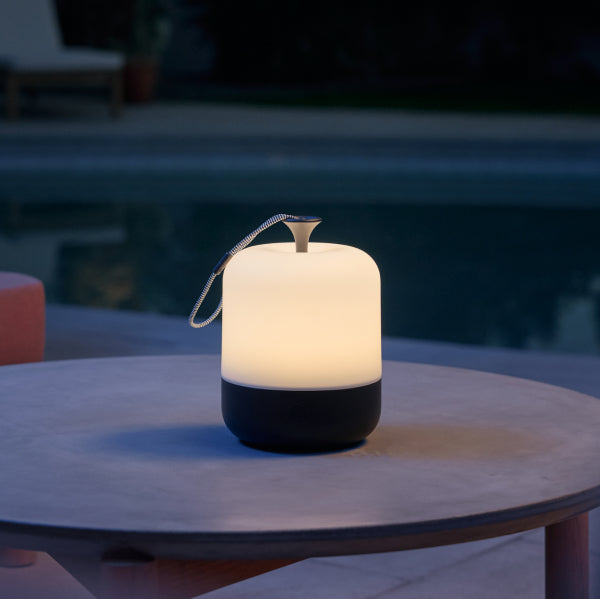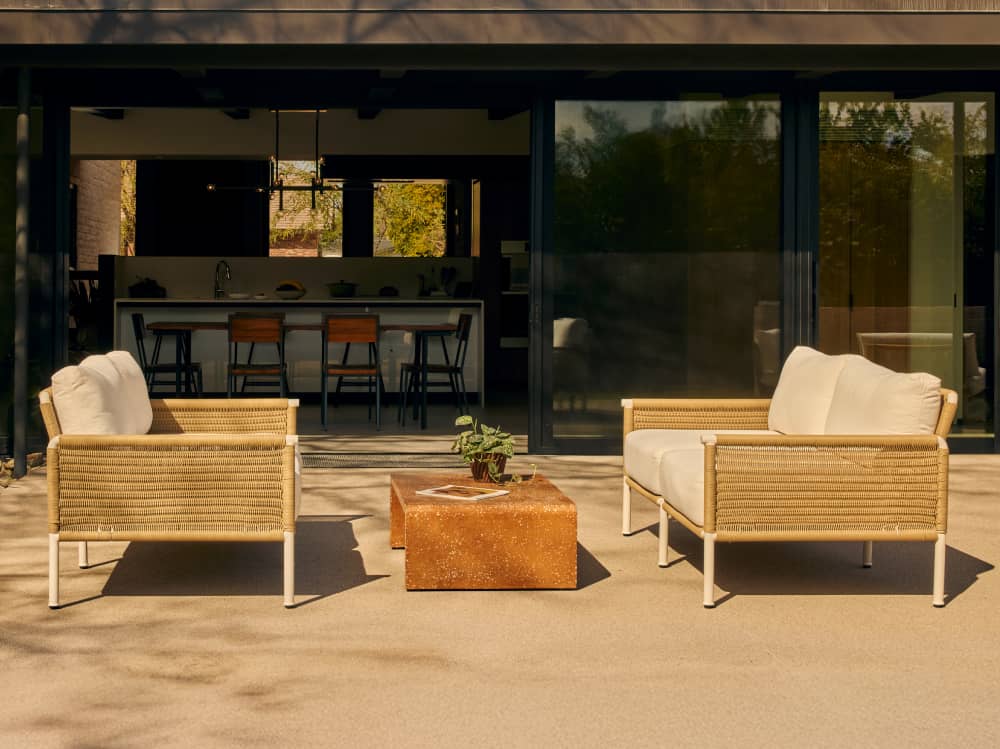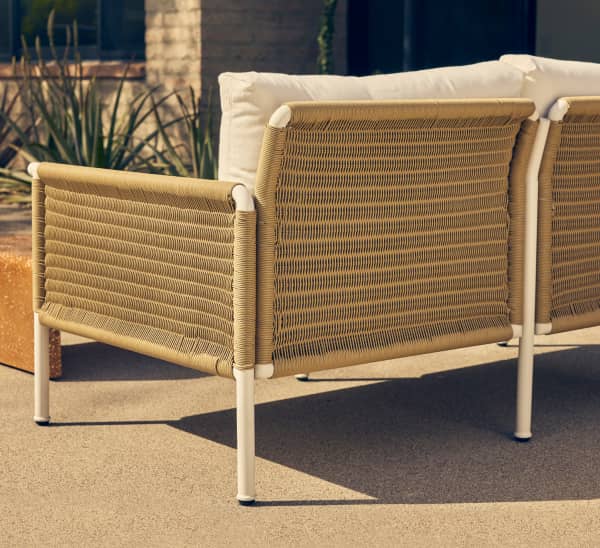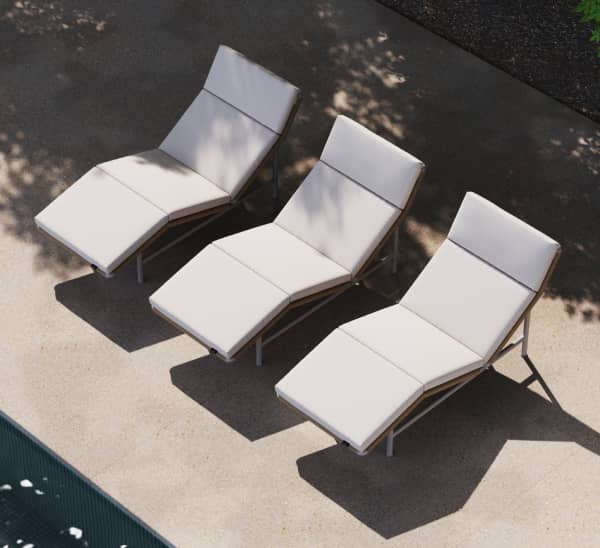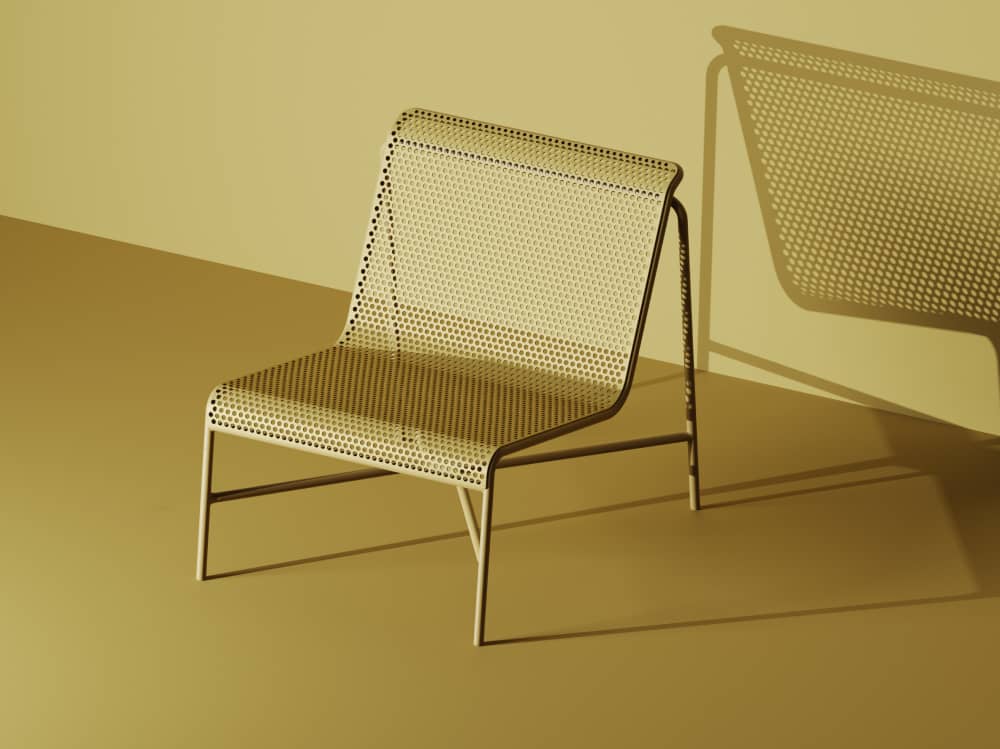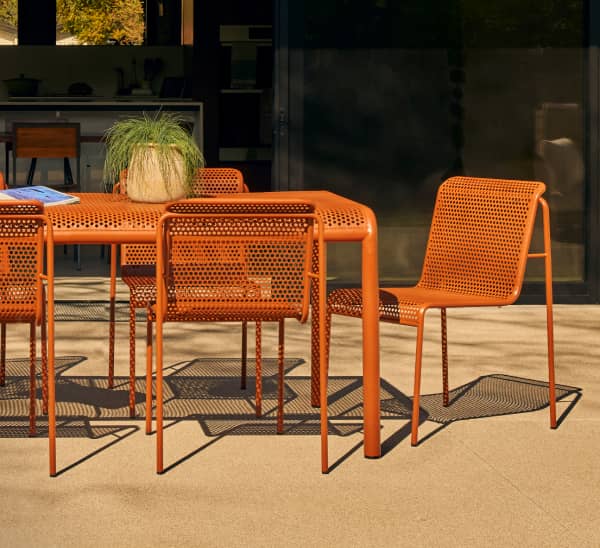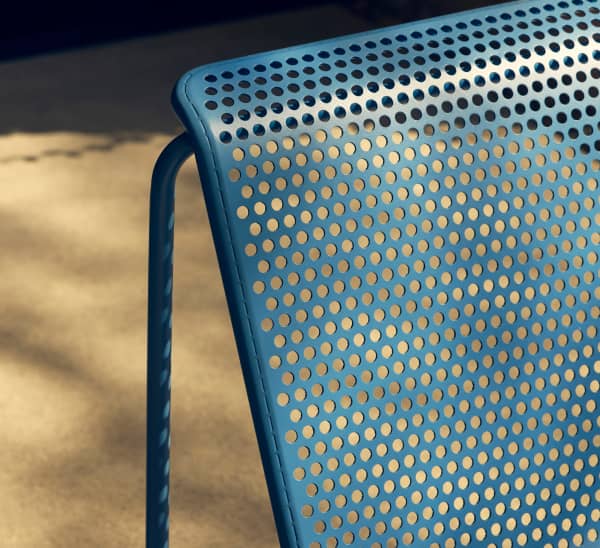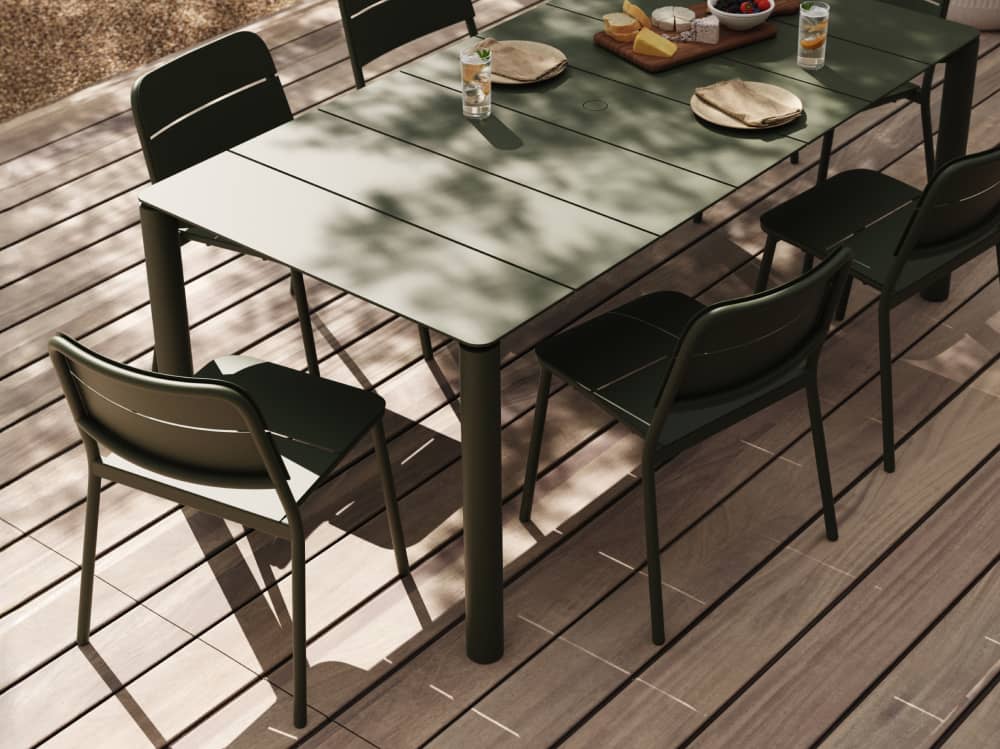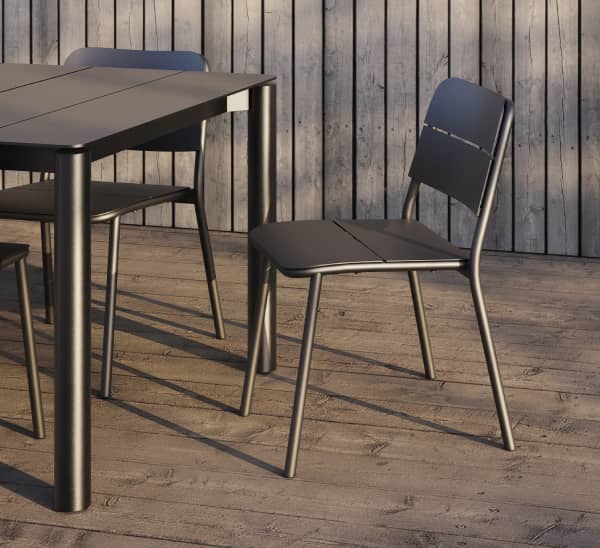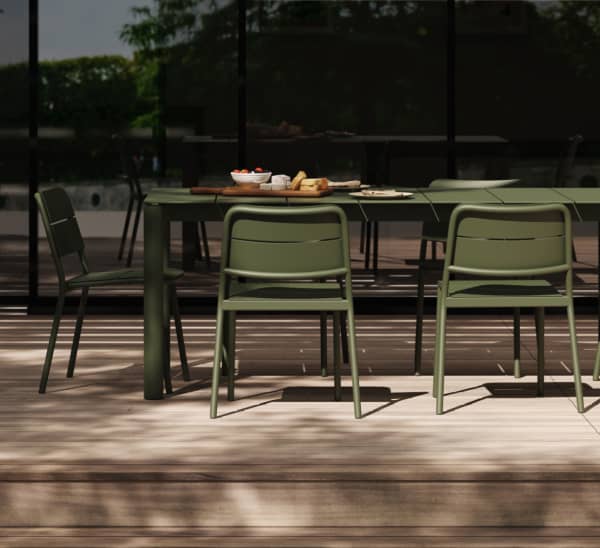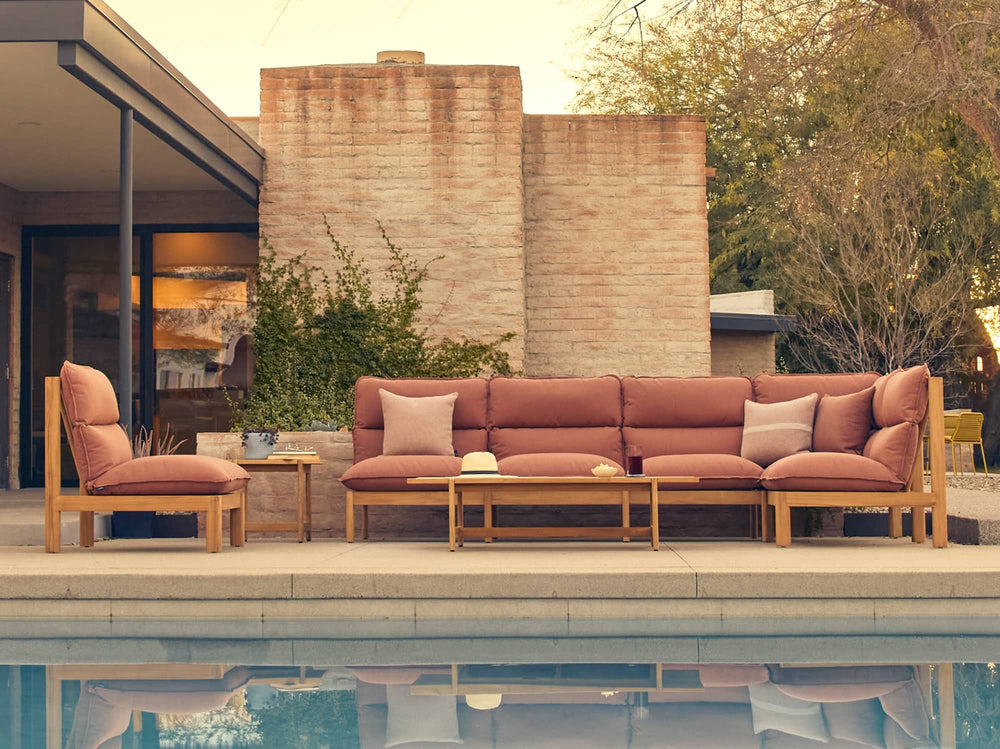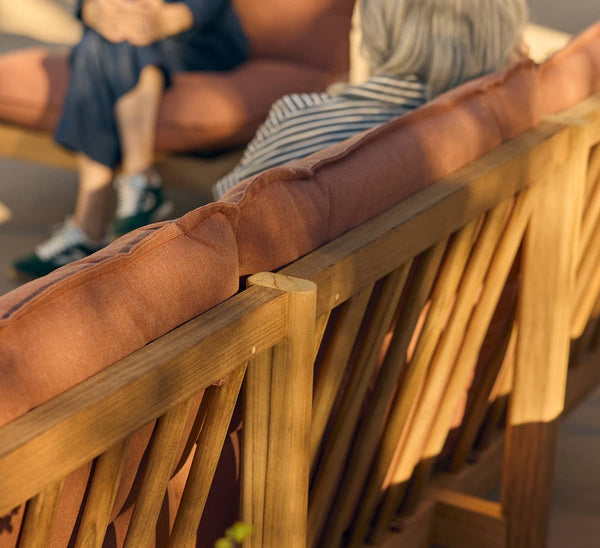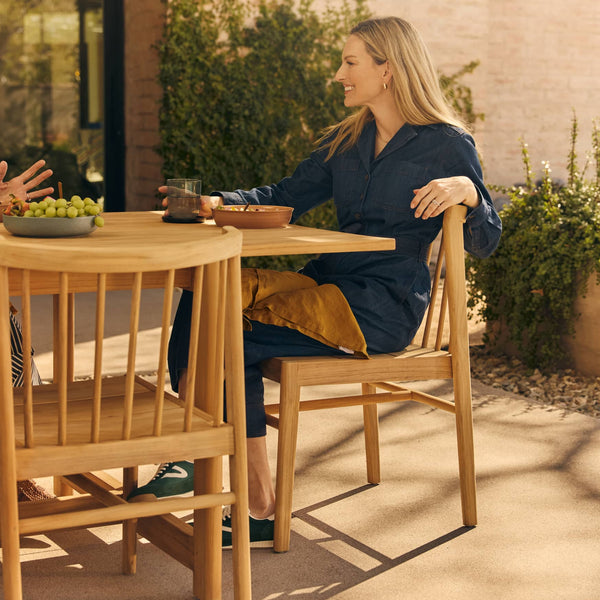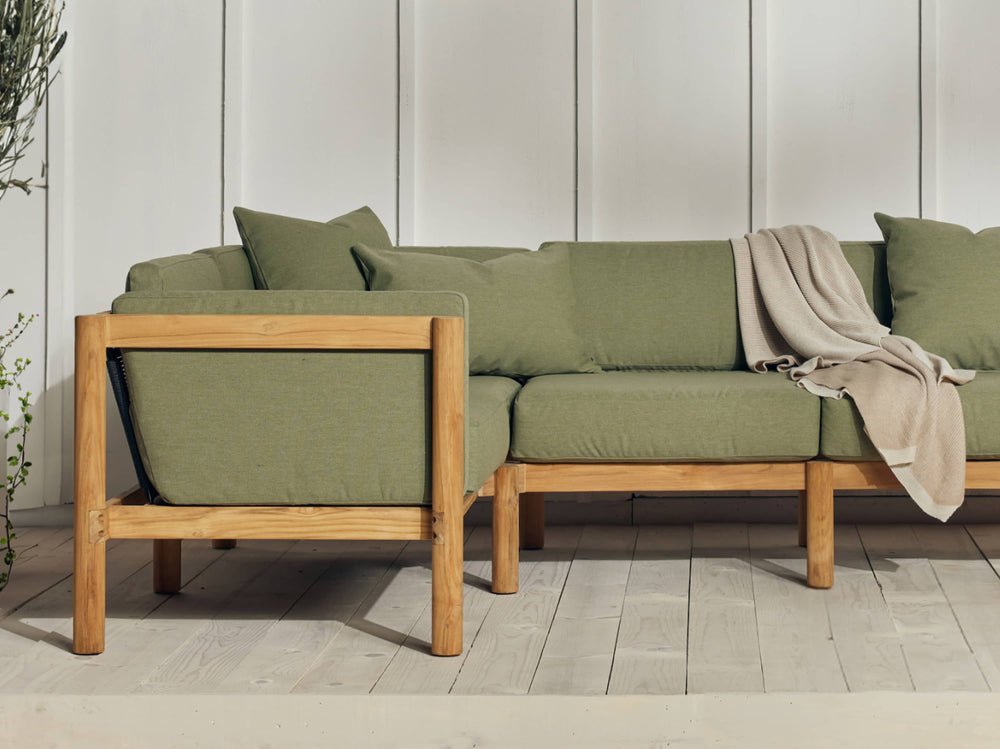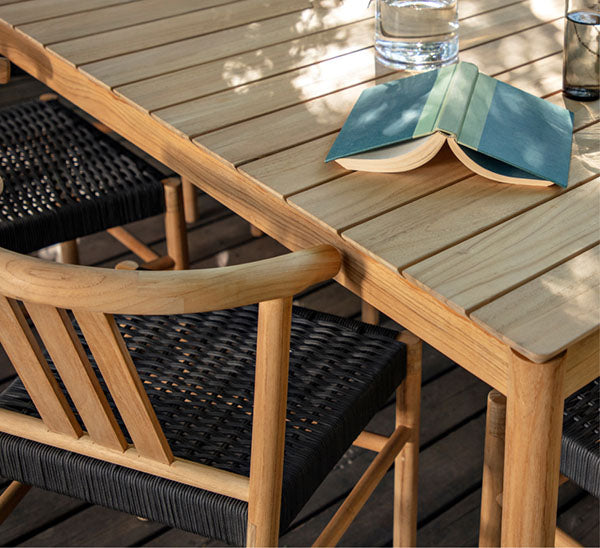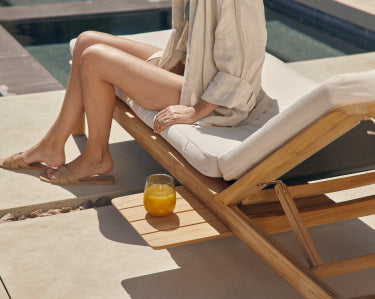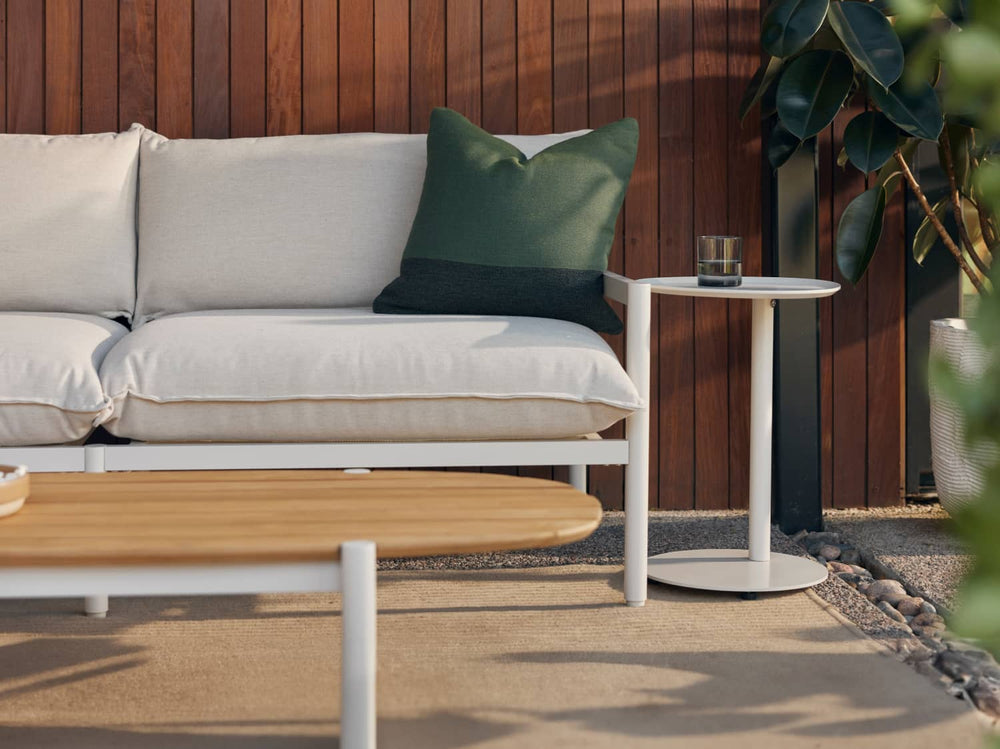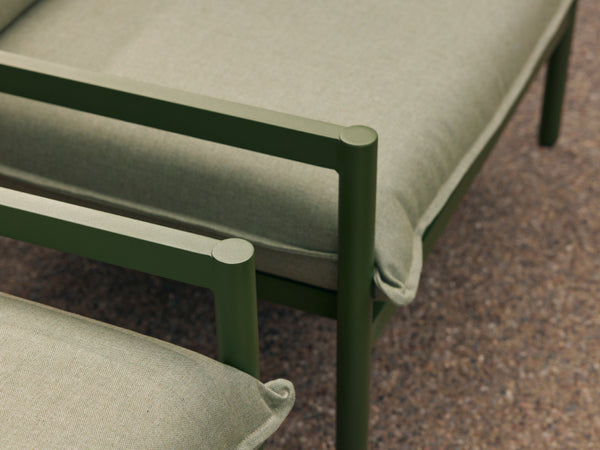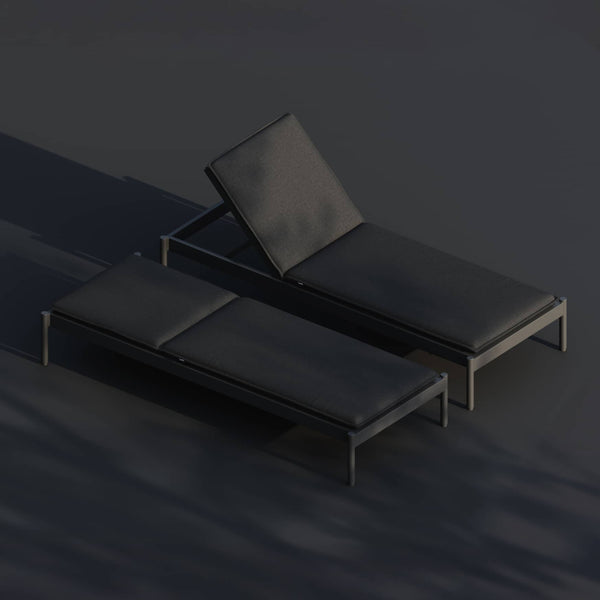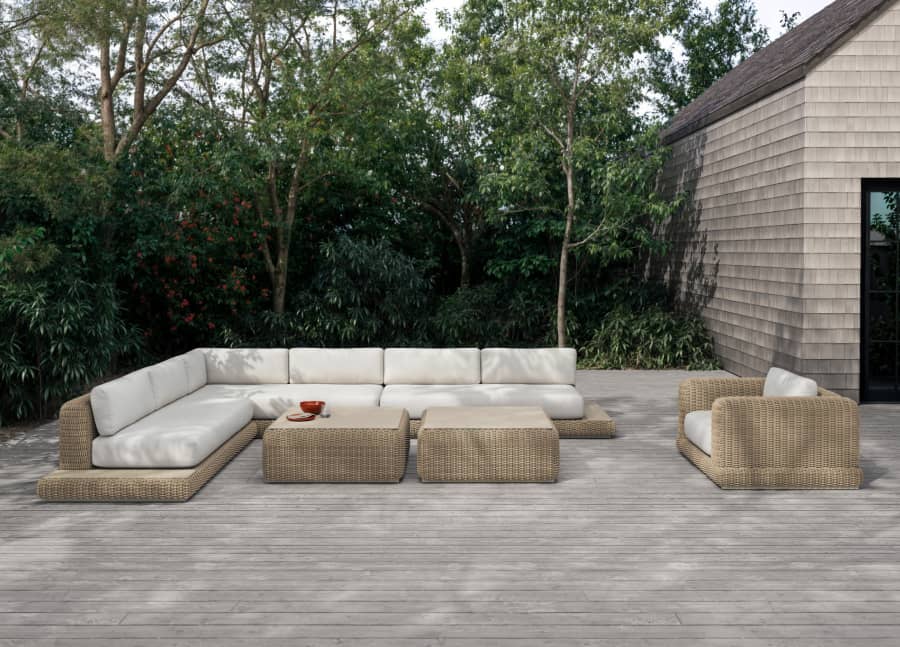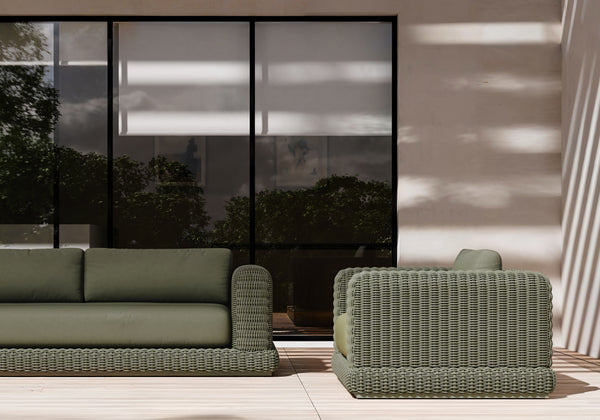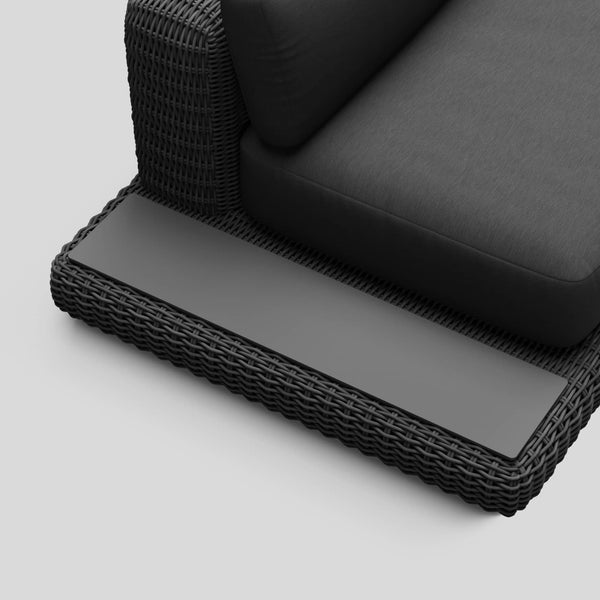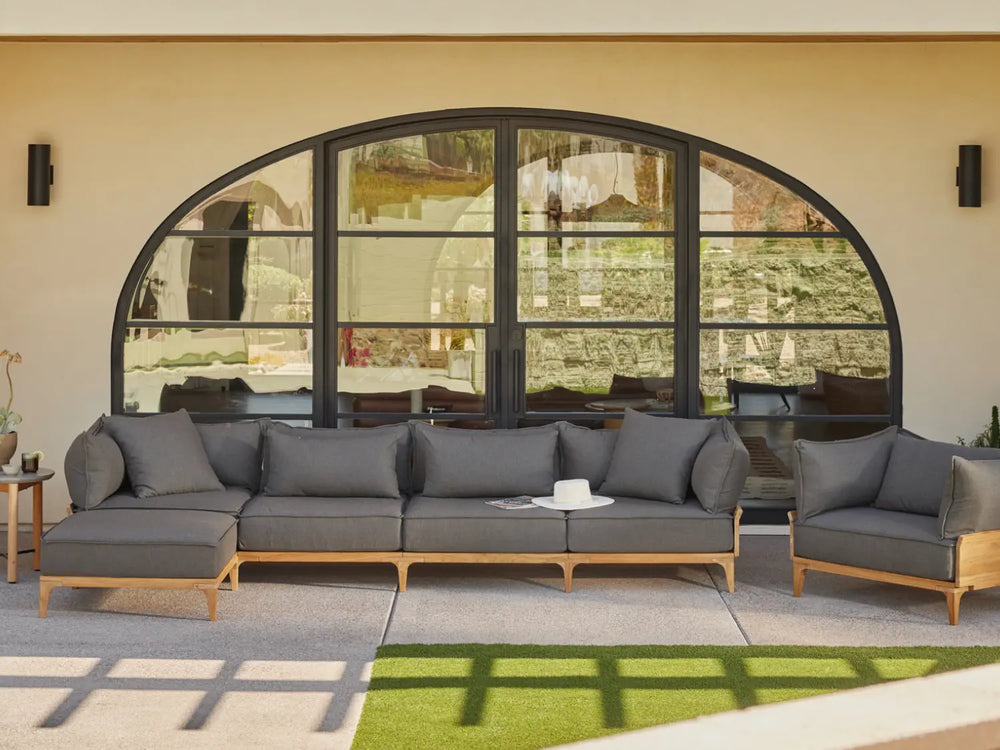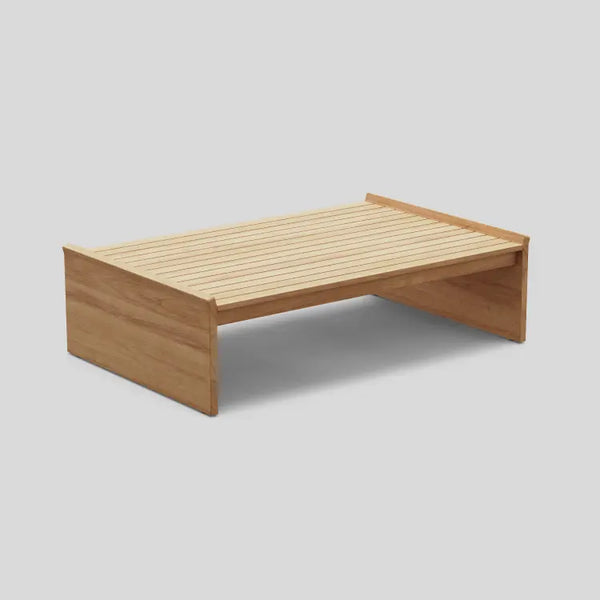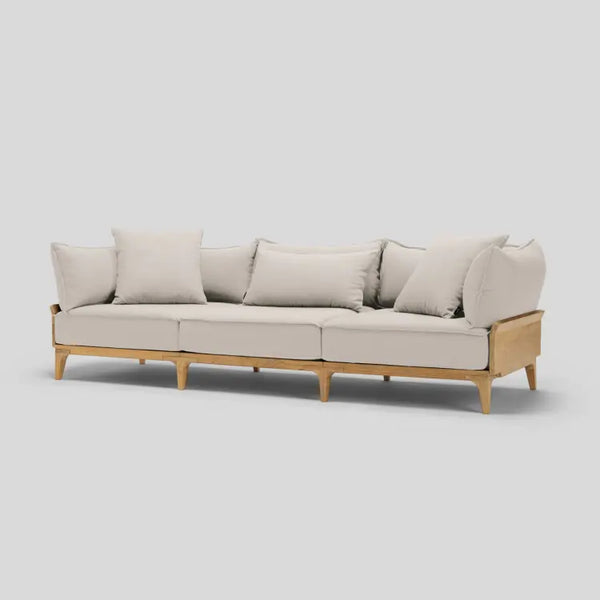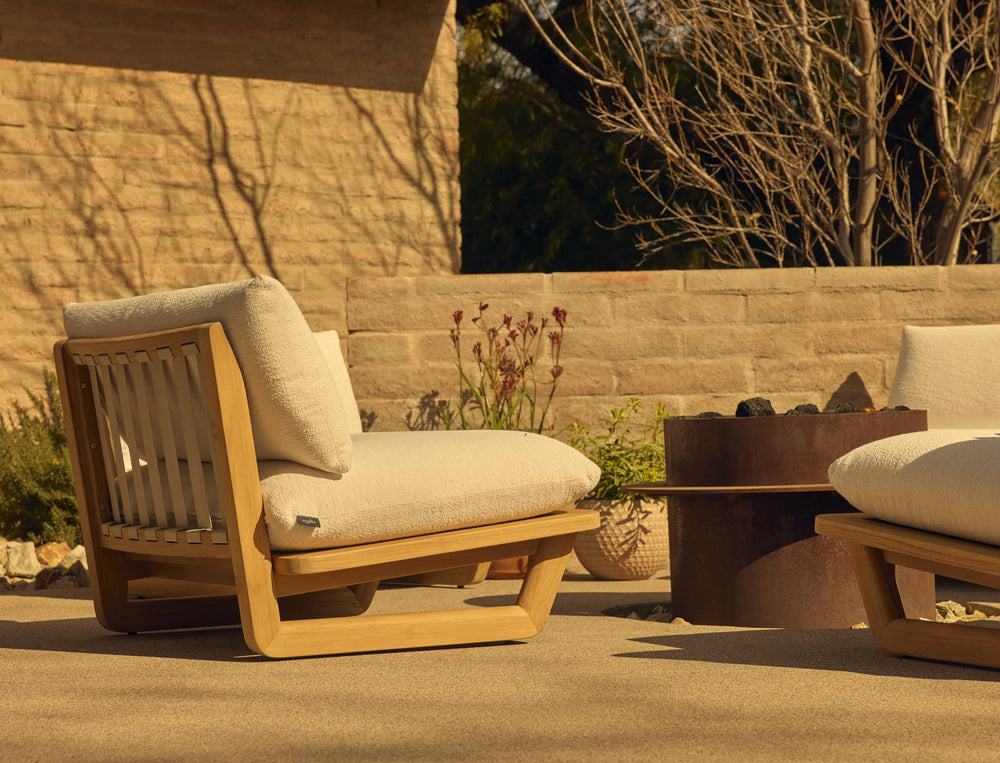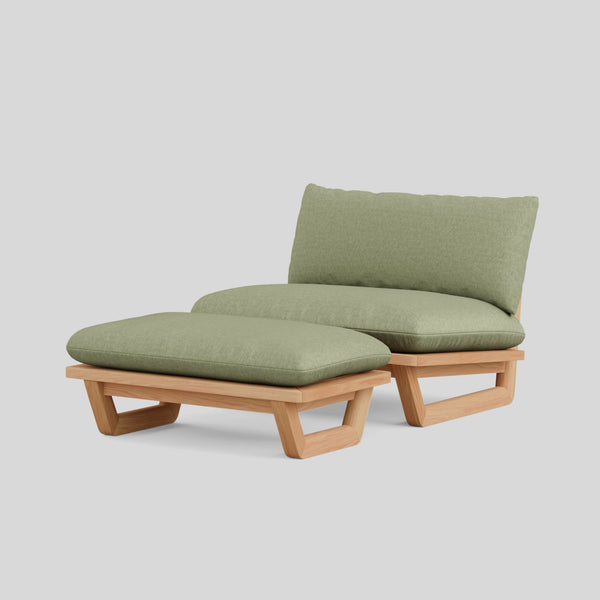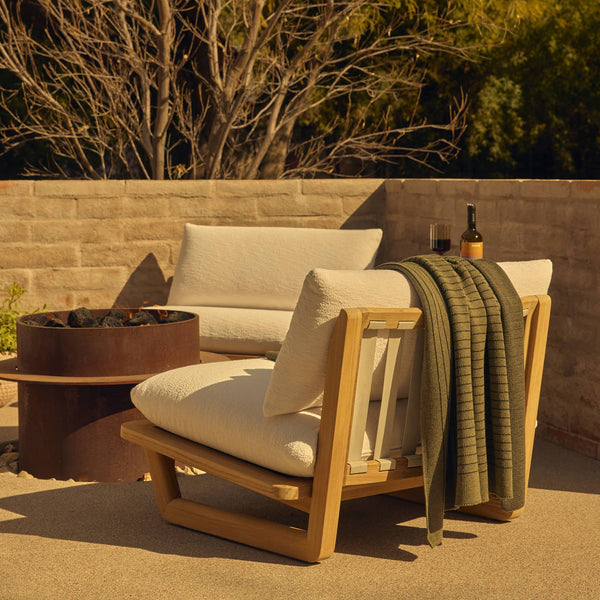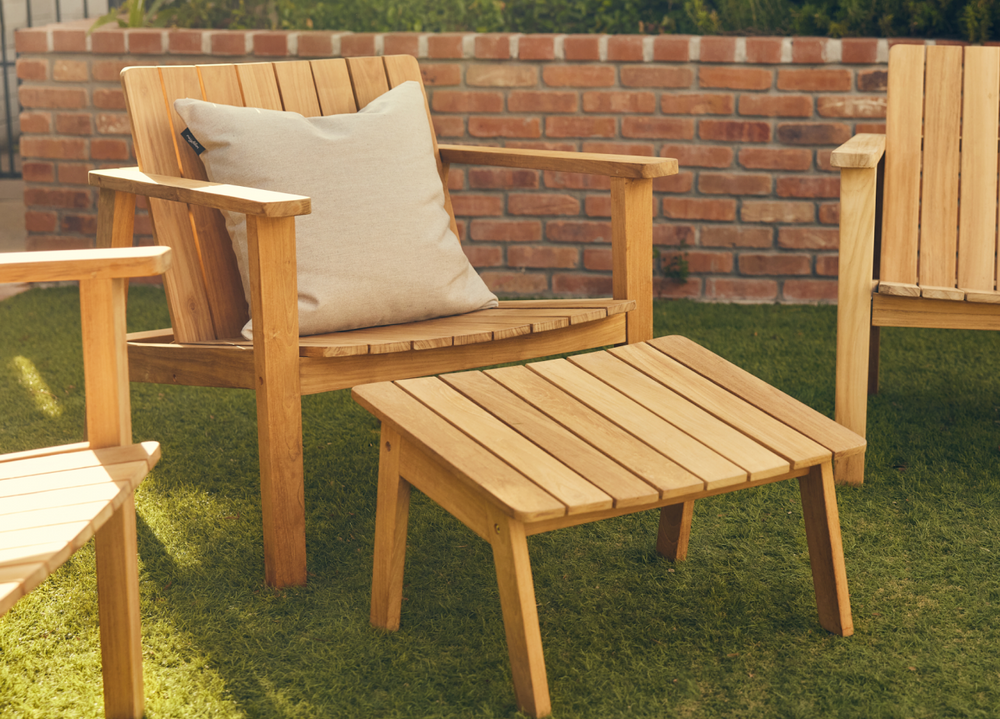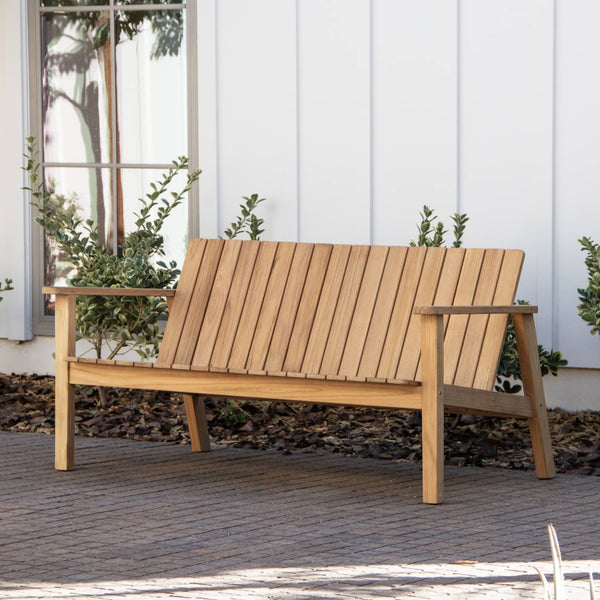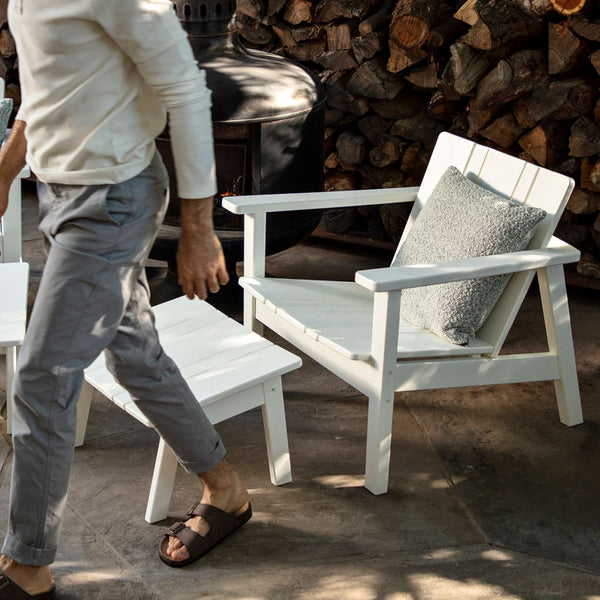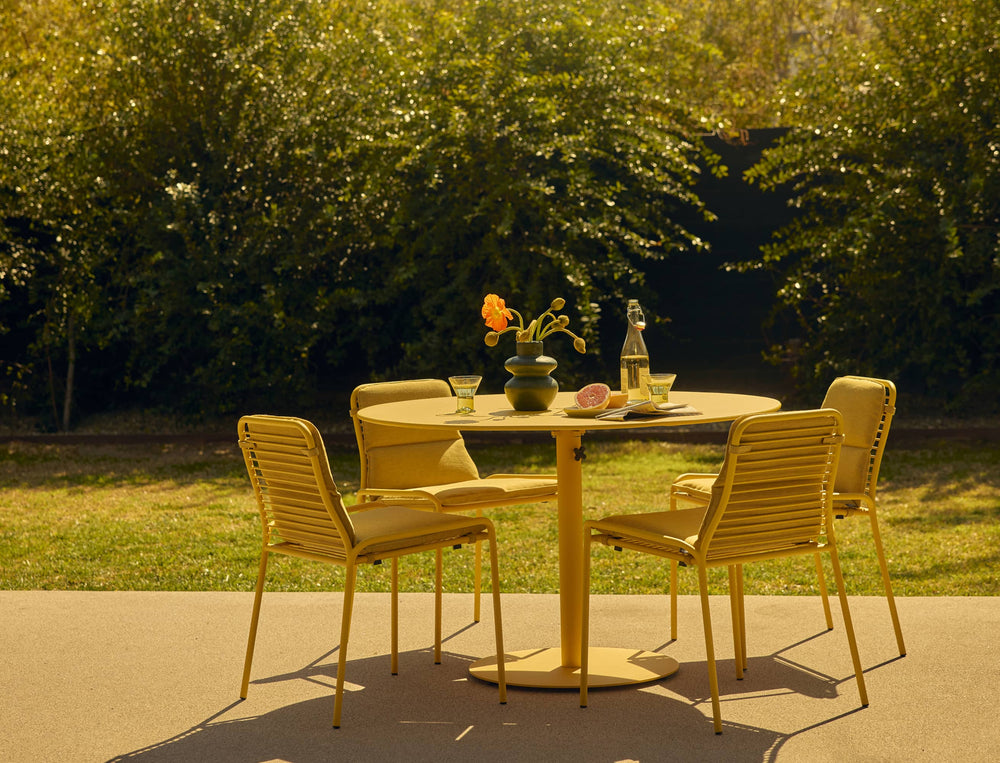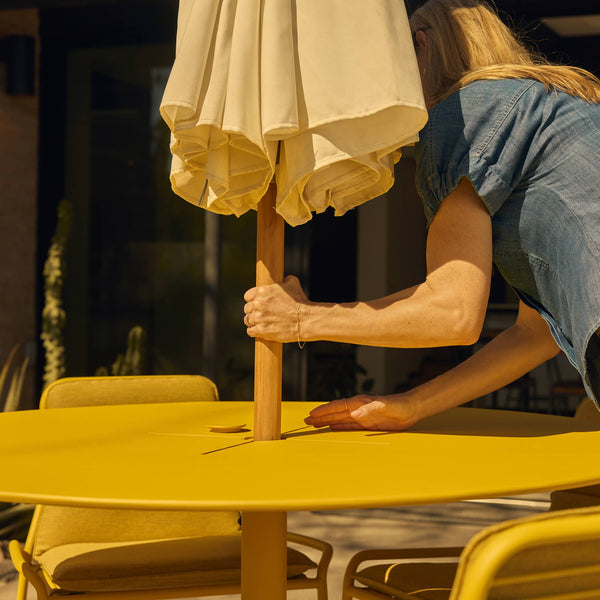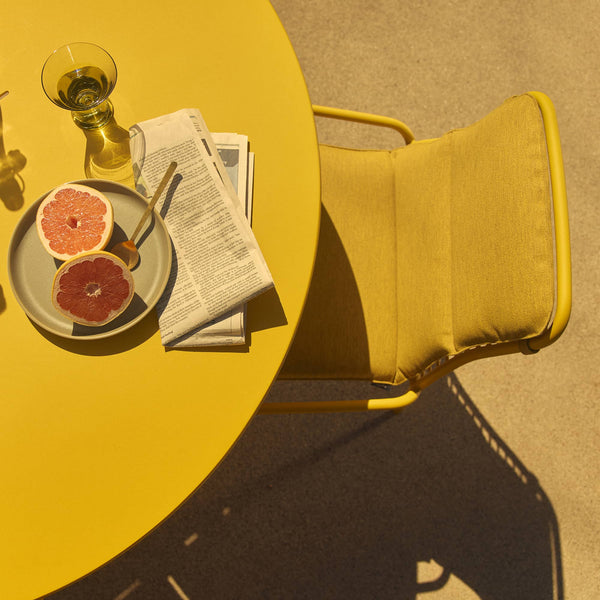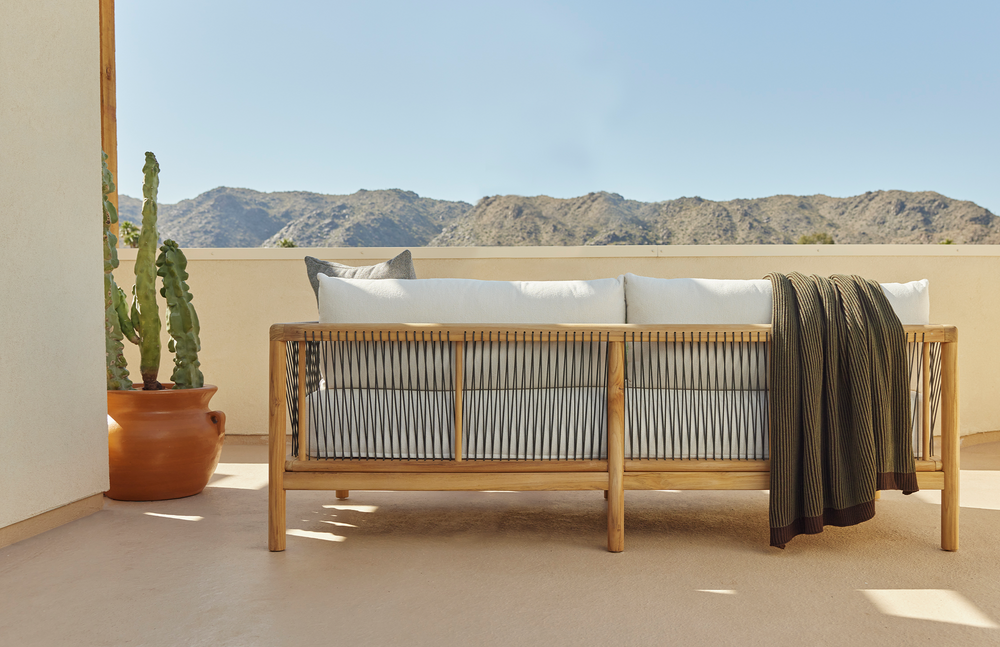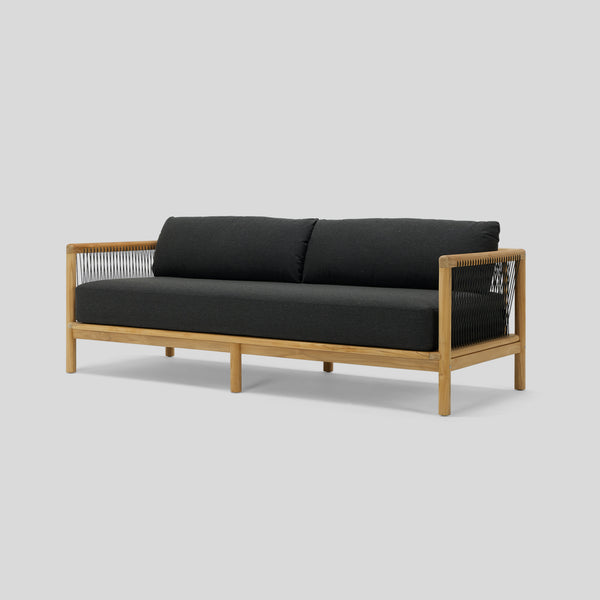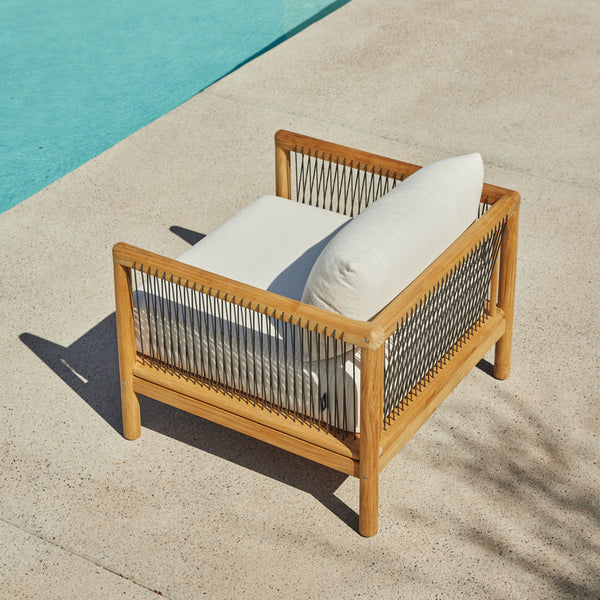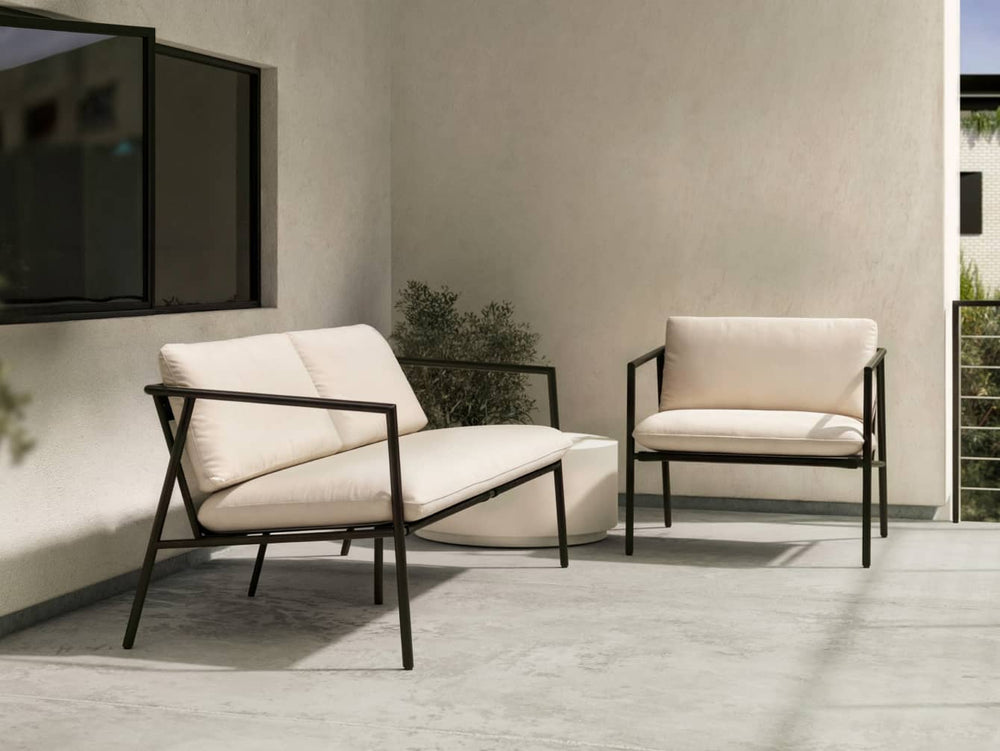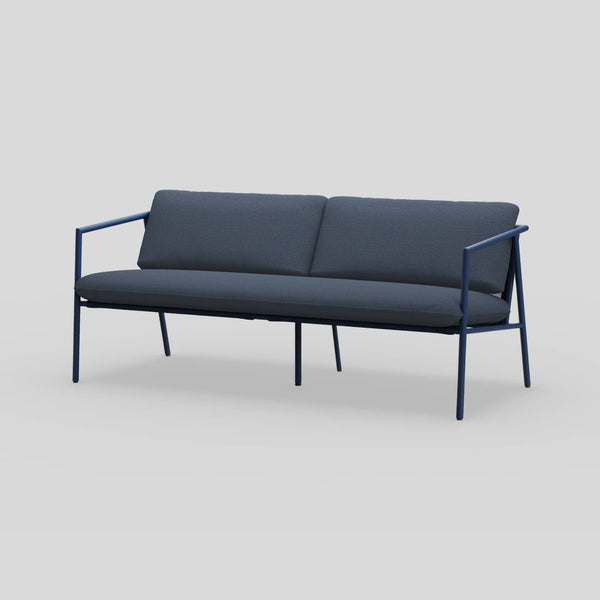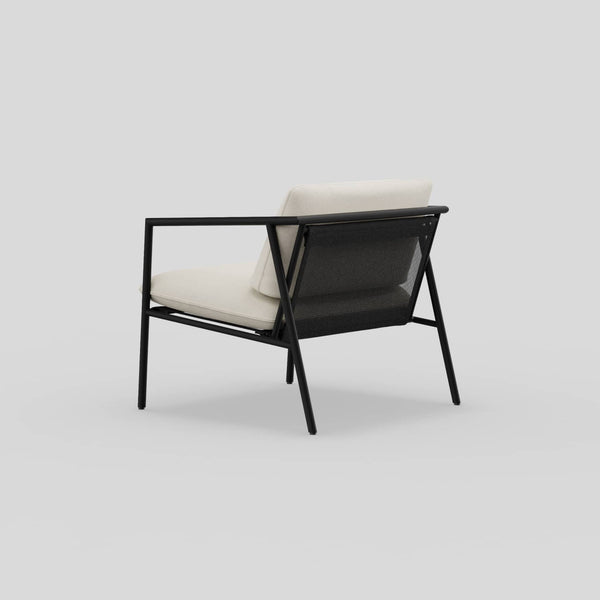Efficient Methods for Cleaning Metal Outdoor Furniture
Written by Neighbor Editorial Team | @neighboroutdoor | Opens in a new window. |
Metal outdoor furniture—whether aluminum, steel, wrought iron, or powder coated—needs to be maintained with proper cleaning techniques. Here’s how.

Transforming your outdoor space into a haven of relaxation involves more than simply having stylish patio furniture—it requires taking proper care of those pieces. There are specific cleaning methods for furniture of all materials but in this comprehensive DIY guide, we'll take you through the essential steps to efficiently clean your metal outdoor furniture. Whether it's aluminum, steel, wrought iron, or powder-coated, regular upkeep not only enhances the longevity and appeal of your furnishings but also ensures a welcoming and pristine outdoor atmosphere for years to come. Keep reading for more on the specifics of proper care for each of these metals.
Preparing for Cleaning
First, we’ll need to talk about preparation. To make this cleaning endeavor seamless, it's essential to gather all the necessary tools and materials before you begin. We recommend assembling the following cleaning essentials:
-
Scrub Brushes: Ideal for tackling tougher spots and grime, ensuring a thorough clean.
-
Microfiber Cloths: Perfect for gentle yet effective wiping and polishing, leaving surfaces spotless.
-
Soft-Bristled Brushes: An excellent choice for more delicate surfaces that require a light touch during cleaning.
-
Toothbrush: A handy tool for reaching smaller nooks and crannies that may be challenging to access with larger brushes.
- Damp Cloth: Using this as a final touch in the cleaning process will ensure a spotless finish.
In addition to these tools, make sure you have a plan for preparing the necessary cleaning solutions. These are all composed of common household items that should be simple for you to prepare:
-
Soapy Water: A classic and effective solution for cleaning and cutting through the dirt and grime on aluminum and steel outdoor furniture.
-
Baking Soda: Baking soda is a secret weapon against stubborn stains and grime, providing a gentle yet abrasive action for a deeper clean.
-
White Vinegar: An excellent solution for tackling mineral deposits and adding a brilliant shine to metal surfaces.
-
Bleach: Bleach is a disinfectant that gives a thorough and hygienic cleaning.
- Dish Soap: Another ideal solution for cutting through grease and grime to leave your metal furniture looking as good as new.
Cleaning Different Types of Metal Furniture
Regular cleaning is pivotal for preserving the longevity and aesthetic appeal of your outdoor furniture, acting as a safeguard against buildup and corrosion. Beyond aesthetics, consistent care is essential for maintaining the structural integrity of your pieces. This next section will take you through an efficient and specific cleaning process for aluminum, steel, wrought iron, and powder-coated metal furniture.
Aluminum Furniture
Aluminum is rust-resistant but can still accumulate grime and become oxidized over time. The best way to clean aluminum furniture, like our Terra Ottoman, is by wiping it with a soft cloth and warm soapy water. If there are any tougher spots, you can also use a toothbrush with mild detergent. After you’ve thoroughly wiped it down, we suggest rinsing it with a garden hose.
Stainless Steel Furniture
Cleaning stainless steel furniture is a straightforward process. Start by removing loose debris with a soft brush or cloth. For routine cleaning, a mixture of mild soap and water works well; simply wipe down the stainless steel surface, following the grain, and rinse thoroughly. Stubborn marks can be tackled with a solution of white vinegar and water or a specialized stainless steel cleaner, applied with a non-abrasive cloth. Avoid abrasive materials or harsh chemicals, as they can damage the stainless steel finish. After cleaning, ensure the furniture is completely dry to prevent water spots and maintain the stainless steel's resistance to corrosion. With regular care and gentle cleaning, stainless steel furniture can retain its durability, luster, and modern aesthetic for an extended period.
Other Steel Furniture
Cleaning non-stainless steel furniture, such as mild steel or carbon steel variants, requires a careful approach to prevent rusting and maintain its aesthetic appeal. Begin by removing any loose dirt or debris using a soft brush or cloth. For regular cleaning, a mixture of mild soap and water can be effective; gently scrub the furniture with this solution and rinse thoroughly. Avoid using abrasive cleaners or tools, as they can damage the applied coatings and accelerate the potential for rust. Periodically applying a specialized metal cleaner or a mixture of white vinegar and water can help remove stubborn stains and maintain the steel's finish.
After cleaning, ensure the furniture is completely dry to prevent moisture-induced corrosion. Additionally, considering the application of protective coatings—like wax or furniture polish—can provide an extra layer of defense against environmental elements and enhance the longevity of your non-stainless steel furniture. Regular maintenance and a gentle cleaning routine will help preserve the appearance and structural integrity of your steel furniture over time.
Wrought Iron Furniture
Wrought iron is susceptible to rust, so regular cleaning of furniture that is constructed with it is crucial. Removing rust from wrought iron involves using steel wool, sandpaper, and a wire brush. To wield these tools effectively, focus on the rust-affected areas and apply gentle yet firm pressure to lift. After using the steel wool to loosen the rust, refine the surface with sandpaper. For more intricate areas and stubborn rust spots, utilize the wire brush, as it ensures thorough and meticulous restoration. Once you are finished with those steps, you should repaint the affected areas with protective varnish or paint for added longevity.
Powder-Coated Metal Furniture
Powder-coated metal furniture requires a delicate touch during the cleaning process in order to protect the finish. When doing so, we recommend using a soft-bristled brush with a mild cleaning solution such as a mixture of gentle dish soap and warm water. After you’re done, rinse the piece thoroughly with a garden hose to remove excess cleaner. As a final step, you can dry the surface with a microfiber cloth to make sure it continues to look well-kept.
Cleaning Other Materials
When it comes to maintaining your outdoor space, don't overlook caring for furniture made with materials like plastic, wicker, and wood. Each of these requires specific care to ensure its longevity and appearance. For plastic furniture, a solution of mild dish soap and warm water can work wonders, paired with a soft sponge or cloth for gentle cleaning. Wicker furniture benefits from a mixture of water and mild detergent, applied with a soft toothbrush to reach into crevices. Wood furniture needs to be handled gently. You can use a solution of oil-based soap and warm water, and a soft cloth for wiping. By tailoring your cleaning approach to each material, you'll not only preserve their integrity but also enhance their overall aesthetic.
Tackling Stubborn Issues
Some stubborn issues you may be faced with when cleaning your metal outdoor furniture include mildew, grime, and rust. To tackle these stubborn issues, you'll want to follow the steps below.
-
Removing Mildew: Mildew can be a persistent issue, but with the right approach, it's easily manageable. First, create a potent mildew-fighting solution by mixing equal parts water and bleach. Then, with a soft brush, generously apply the solution to affected areas, ensuring comprehensive coverage. Allow the mixture to sit for a few minutes and penetrate the mildew before rinsing thoroughly with water. This method not only eradicates existing mildew but also helps prevent its return, ensuring your metal furniture stays clean. If your metal outdoor furniture has a powder-coated finish, you should not use bleach in your cleaning solution. Instead, swap it for a mild dish soap.
-
Removing Grime: For stubborn grime that may accumulate on metal furniture surfaces, a simple yet effective solution lies in the power of baking soda. Create a paste by combining baking soda with water until a thick consistency forms. Apply this paste generously to the grimy areas, utilizing a scrubbing motion to dislodge the grime. After scrubbing, rinse the furniture thoroughly to reveal a refreshed and grime-free surface. This natural and gentle approach ensures the removal of grime without compromising the integrity of your metal furniture.
- Removing Rust: Dealing with rust requires a strategic and effective approach to restore the metal's original luster. Begin by applying white vinegar directly to the rust-affected areas, allowing it to sit for a few minutes. The mild acidity of vinegar works to break down the rust. Next, use steel wool to gently scrub away the loosened rust, being careful not to damage the metal surface. If the rust is more stubborn, consider using a commercial rust remover and following the product's instructions for optimal results. Whichever method you choose, completing the process with a thorough rinse ensures a rust-free and revitalized appearance for your metal furniture.
Caring for Outdoor Cushions and Umbrellas
To extend the longevity and vibrancy of your outdoor cushions and umbrellas, you must properly clean them on a regular basis. For machine-washable items, be sure to adhere to the care instructions, which will guide you on the appropriate settings and laundry detergent for optimal cleaning. If machine washing isn't an option for your outdoor cushion or umbrella, an effective alternative is spot cleaning. To spot clean, begin by creating a mild solution using water and a gentle detergent, ensuring it is well-dissolved. Dab a clean, soft cloth or sponge into the solution, then gently blot the stained or soiled areas. Avoid vigorous rubbing to prevent potential damage to the fabric. For stubborn stains, consider using a soft-bristled brush and applying the solution in a circular motion. If your cushion or umbrella is solution-dyed (like Sunbrella fabric!), you should note that bleach won’t ruin the fabric so you could swap it for the detergent in your spot-cleaning solution.
Once the spot cleaning is complete, allow the cushion or umbrella to air dry thoroughly before returning it to your outdoor space. Regular spot cleaning not only targets specific areas but also contributes to the overall upkeep, ensuring your outdoor pieces stay fresh and inviting.
These essential steps are not just about maintenance; they're a testament to your commitment to preserving the comfort and style these elements bring to your outdoor space. For a more in-depth understanding and additional tips on caring for our outdoor furniture with fabric, check out this guide to Sunbrella Fabric Care.
Final Thoughts
Regular cleaning is key to maintaining the appearance and durability of your metal outdoor furniture as well as other accessories like cushions and umbrellas. We encourage you to implement the cleaning techniques discussed in this blog in order to properly care for and elevate your pieces. Remember, a well-maintained outdoor space is a welcoming one!

